Chair rails offer an elegant solution for transforming ordinary walls into sophisticated architectural features. These horizontal moldings, traditionally installed one-third up the wall, provide both practical protection and visual appeal. From classic wooden designs to contemporary metal installations, chair rails can complement any interior style while adding depth and character to your space. Whether you're renovating a formal dining room or updating a hallway, the right chair rail can dramatically enhance your home's aesthetic while reflecting your personal design preferences.
1. Traditional Wooden Chair Rail with Stained Finish
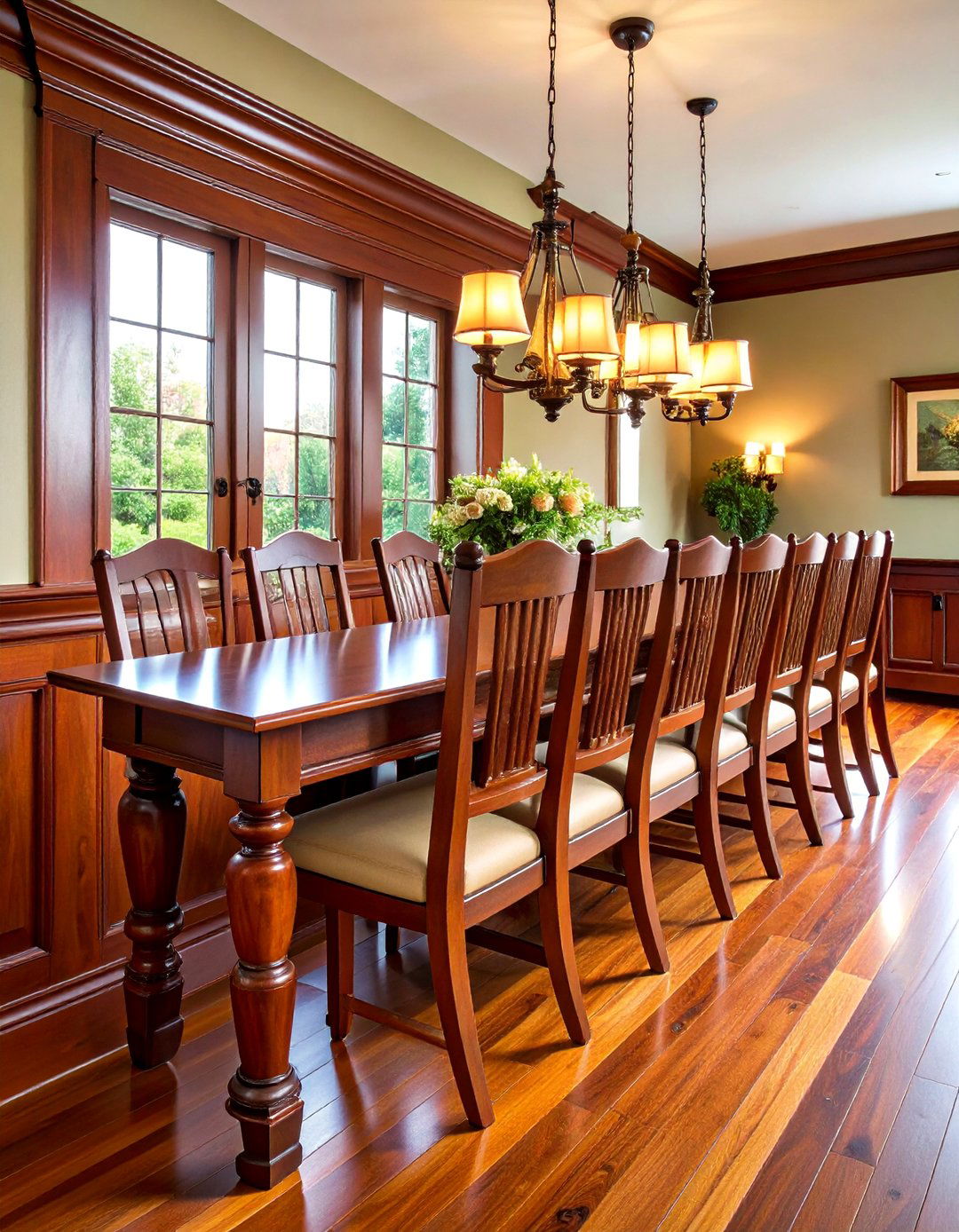
A classic stained wooden chair rail remains the gold standard for timeless elegance. Mahogany, oak, or walnut stains create rich, warm tones that complement traditional and transitional interiors beautifully. This chair rail style works exceptionally well in dining rooms, studies, and formal living spaces where sophistication is paramount. The natural wood grain adds texture and visual interest while maintaining a refined appearance. For optimal results, match the stain color to existing woodwork like baseboards and crown molding. Consider pairing with neutral wall colors above and below to let the wood's natural beauty take center stage, creating a harmonious balance throughout the room.
2. Two-Tone Chair Rail Wall Design

Transform your walls with a striking two-tone chair rail design that creates visual contrast and depth. This popular approach involves painting different colors above and below the chair rail, typically using a darker shade on the bottom third and a lighter color above. Navy blue below with crisp white above creates a nautical-inspired look, while deep gray paired with soft cream offers modern sophistication. The chair rail itself can be painted white to match trim work or in a coordinating accent color. This technique works particularly well in bedrooms, hallways, and living areas where you want to add drama without overwhelming the space.
3. Chair Rail with Classic Wainscoting
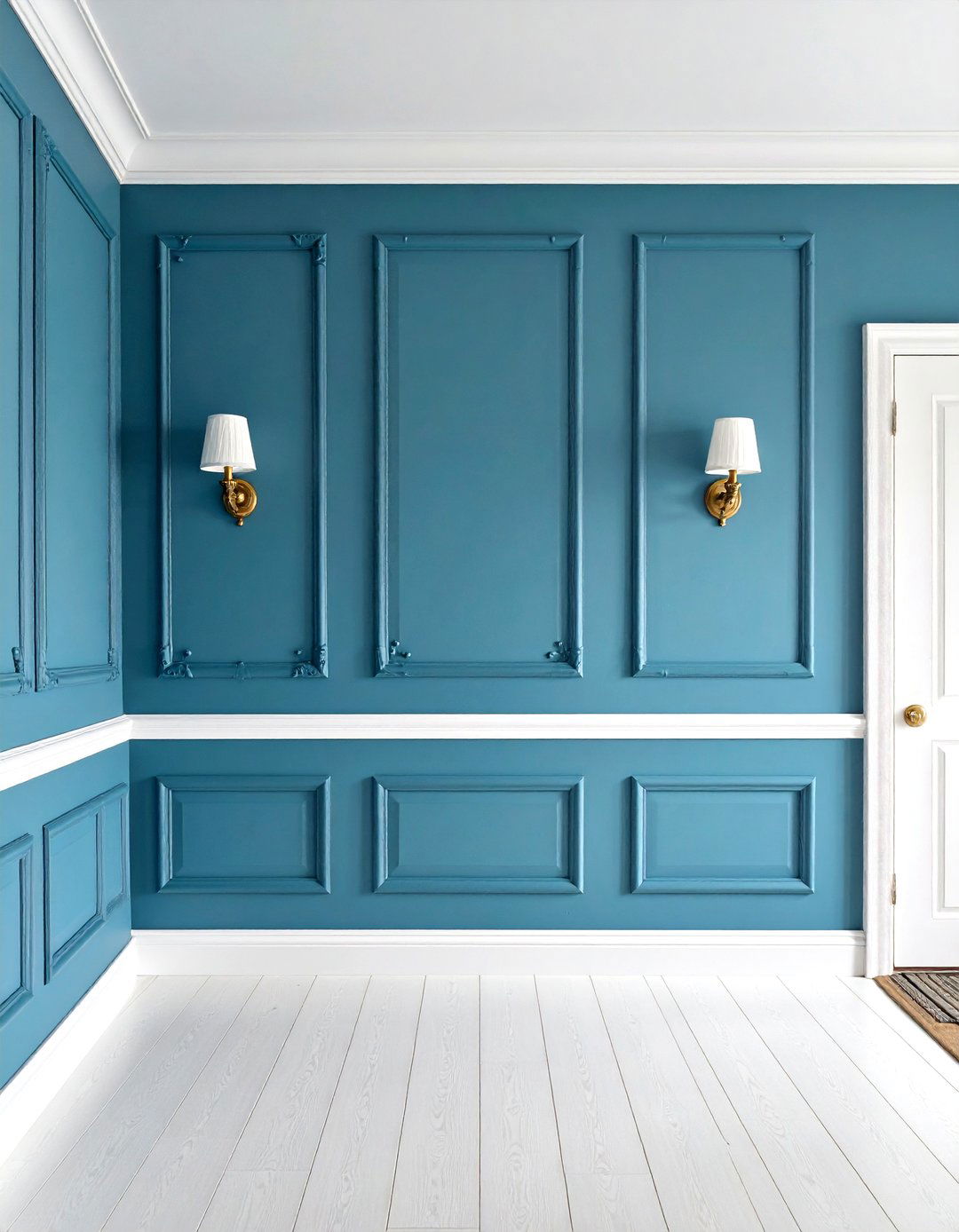
Combining chair rail molding with traditional wainscoting creates an instantly elegant and polished appearance. The wainscoting panels below the chair rail add architectural detail while the molding provides a finished cap that defines the transition to the upper wall. This chair rail combination works beautifully in entryways, dining rooms, and powder rooms where you want to make a lasting impression. Choose from raised panels for formal spaces or flat panels for a more contemporary approach. Paint the entire treatment in crisp white for classic appeal, or experiment with two-tone combinations where the panels are darker than the upper walls for added sophistication and visual weight.
4. Board and Batten Chair Rail Style

Create a modern farmhouse aesthetic with a board and batten chair rail design that combines rustic charm with contemporary appeal. This style features wide boards alternating with narrow battens below the chair rail, creating vertical lines that add height and interest to your walls. The chair rail molding caps the board and batten installation while providing a smooth transition to the upper wall color. This approach works exceptionally well in casual dining areas, family rooms, and children's spaces. Paint everything in matching white or cream for a cohesive look, or create contrast by using a darker color for the board and batten while keeping the chair rail and upper walls light.
5. Beadboard Chair Rail Installation
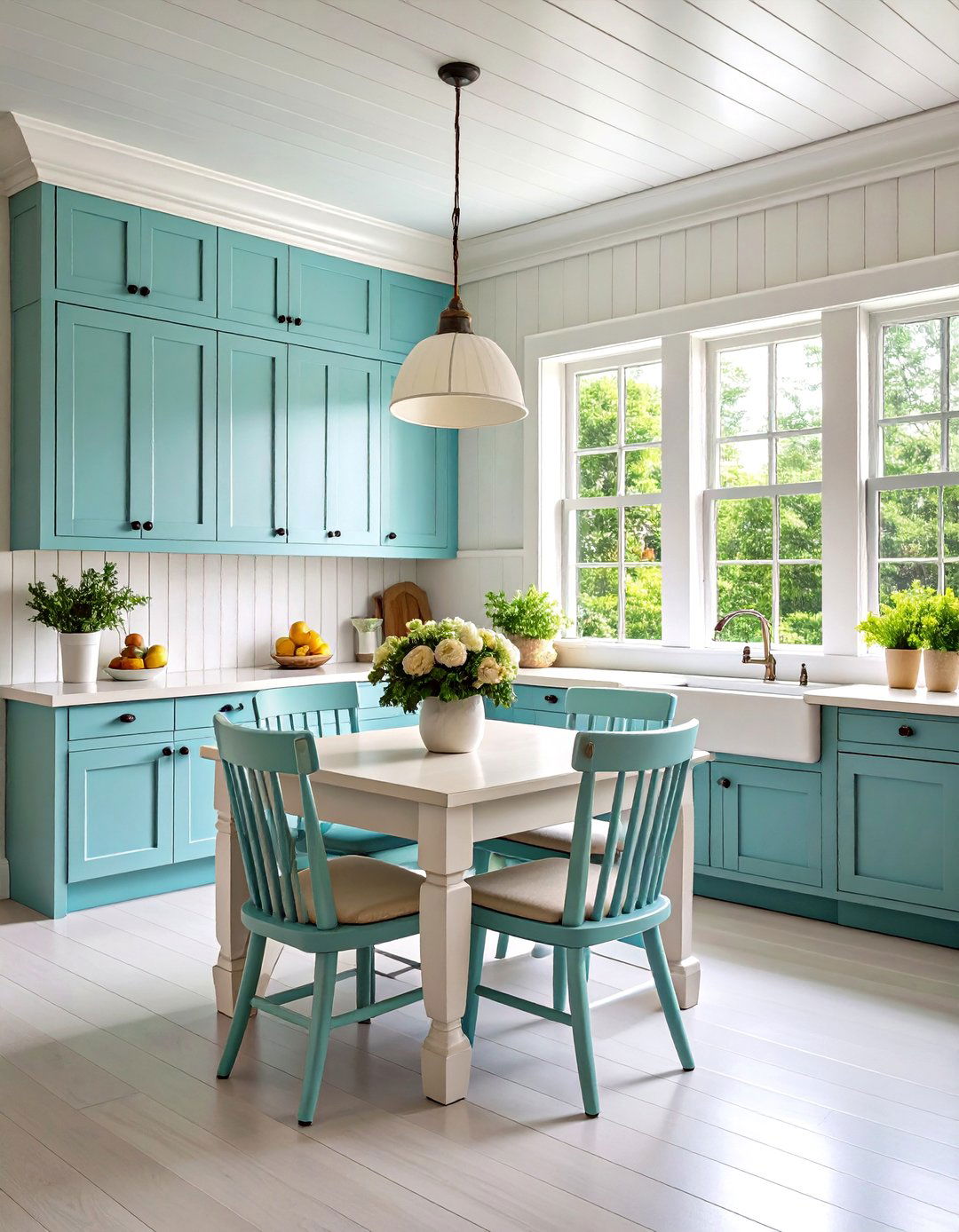
Achieve cottage-style charm with a beadboard chair rail treatment that brings texture and character to any room. The narrow vertical planks with distinctive ridges or "beads" create visual interest below the chair rail while adding a cozy, informal atmosphere. This chair rail style works particularly well in kitchens, breakfast nooks, and casual dining areas where you want to evoke a relaxed, country feeling. The beadboard can extend from the baseboard to the chair rail, which provides a clean finishing line. Paint the entire treatment in soft whites, pale blues, or sage greens to enhance the cottage aesthetic while maintaining a fresh, timeless appearance that complements various decorating styles.
6. Picture Frame Molding Chair Rail Combination

Elevate your walls with an elegant picture frame molding chair rail design that creates sophisticated geometric patterns. This approach involves installing rectangular or square molding frames below the chair rail, creating the appearance of raised panels without the expense of true wainscoting. The chair rail serves as the top border while creating a unified look with carefully measured spacing. This style works beautifully in formal dining rooms, living rooms, and master bedrooms where architectural detail is desired. Use consistent spacing between frames and maintain symmetry for the most polished appearance. Paint everything in monochromatic tones for modern appeal, or use contrasting colors to highlight the geometric pattern.
7. Raised Panel Chair Rail Design
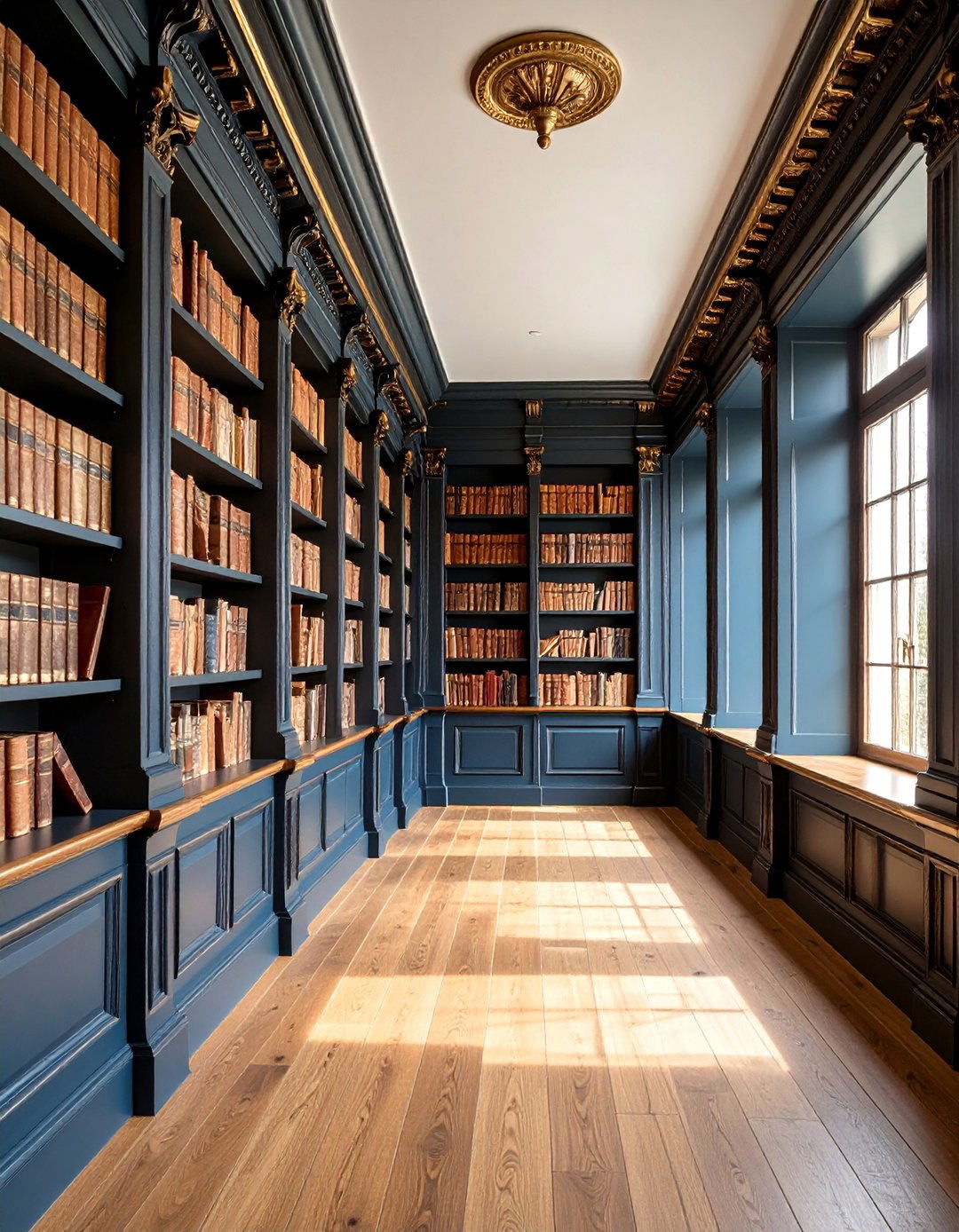
Create luxurious architectural detail with a raised panel chair rail design that brings Old World elegance to modern homes. This sophisticated approach features panels that project outward from the wall surface, creating shadows and depth that enhance the room's visual appeal. The chair rail molding crowns the raised panels while providing structural support and a finished appearance. This style works exceptionally well in formal dining rooms, libraries, and traditional living spaces where classic elegance is the goal. Consider using rich, dark paint colors to emphasize the panel's dimensional quality, or opt for subtle tone-on-tone combinations that highlight texture while maintaining sophistication. Professional installation ensures precise measurements and seamless joints.
8. Shiplap Chair Rail Treatment
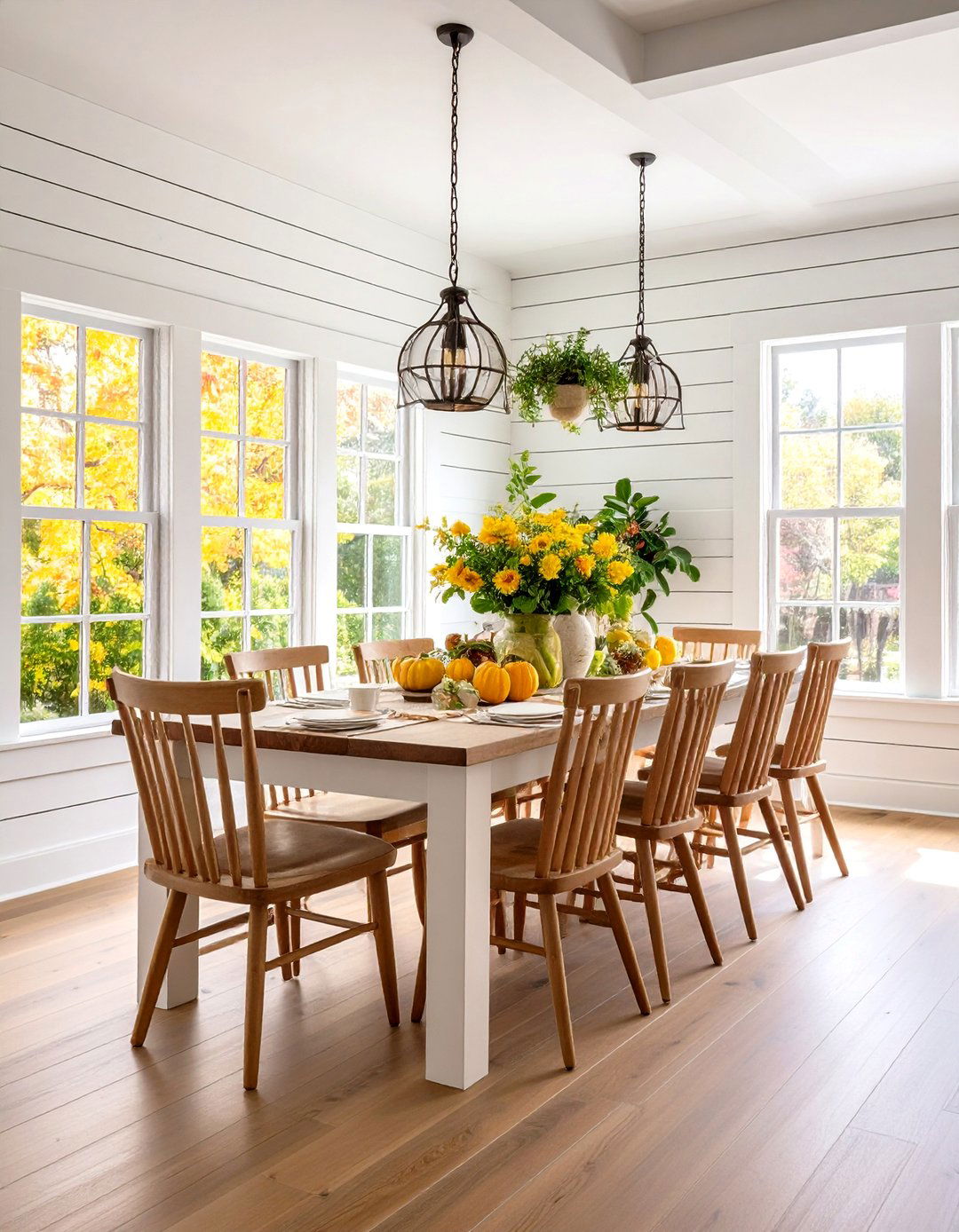
Bring modern farmhouse style to your space with a shiplap chair rail treatment that combines rustic charm with contemporary sensibilities. The horizontal wooden boards with their characteristic gaps create texture and visual interest below the chair rail while maintaining clean, streamlined lines. This chair rail style works particularly well in casual dining areas, kitchens, and family rooms where relaxed elegance is desired. The chair rail molding provides a crisp transition between the shiplap and upper wall color. Paint the shiplap in classic white for timeless appeal, or experiment with soft grays and blues for a more contemporary look. The horizontal lines help make rooms appear wider while adding architectural character.
9. Metal and Aluminum Chair Rail
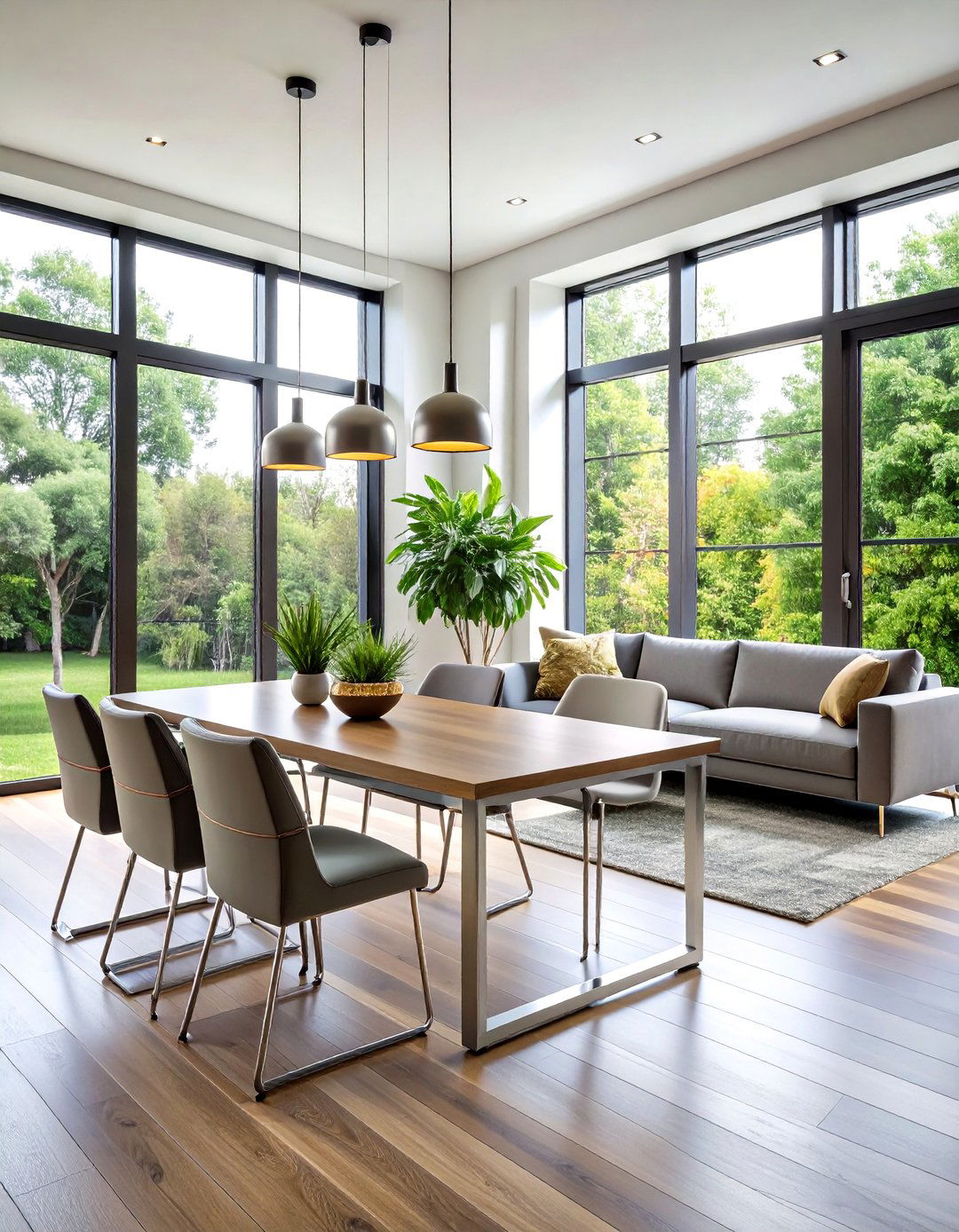
Embrace industrial chic with a metal or aluminum chair rail that brings contemporary edge to modern interiors. Sleek steel, brushed aluminum, or powder-coated metal chair rails create clean lines perfect for loft-style homes, modern offices, and contemporary dining spaces. This chair rail material offers exceptional durability while requiring minimal maintenance compared to traditional wood options. The metal finish can complement stainless steel appliances in kitchen applications or provide striking contrast against painted walls. Choose from various profiles including flat strips, angled designs, or more decorative options. The industrial aesthetic pairs beautifully with exposed brick, concrete, and other modern materials while creating sophisticated urban appeal.
10. Stone and Tile Chair Rail
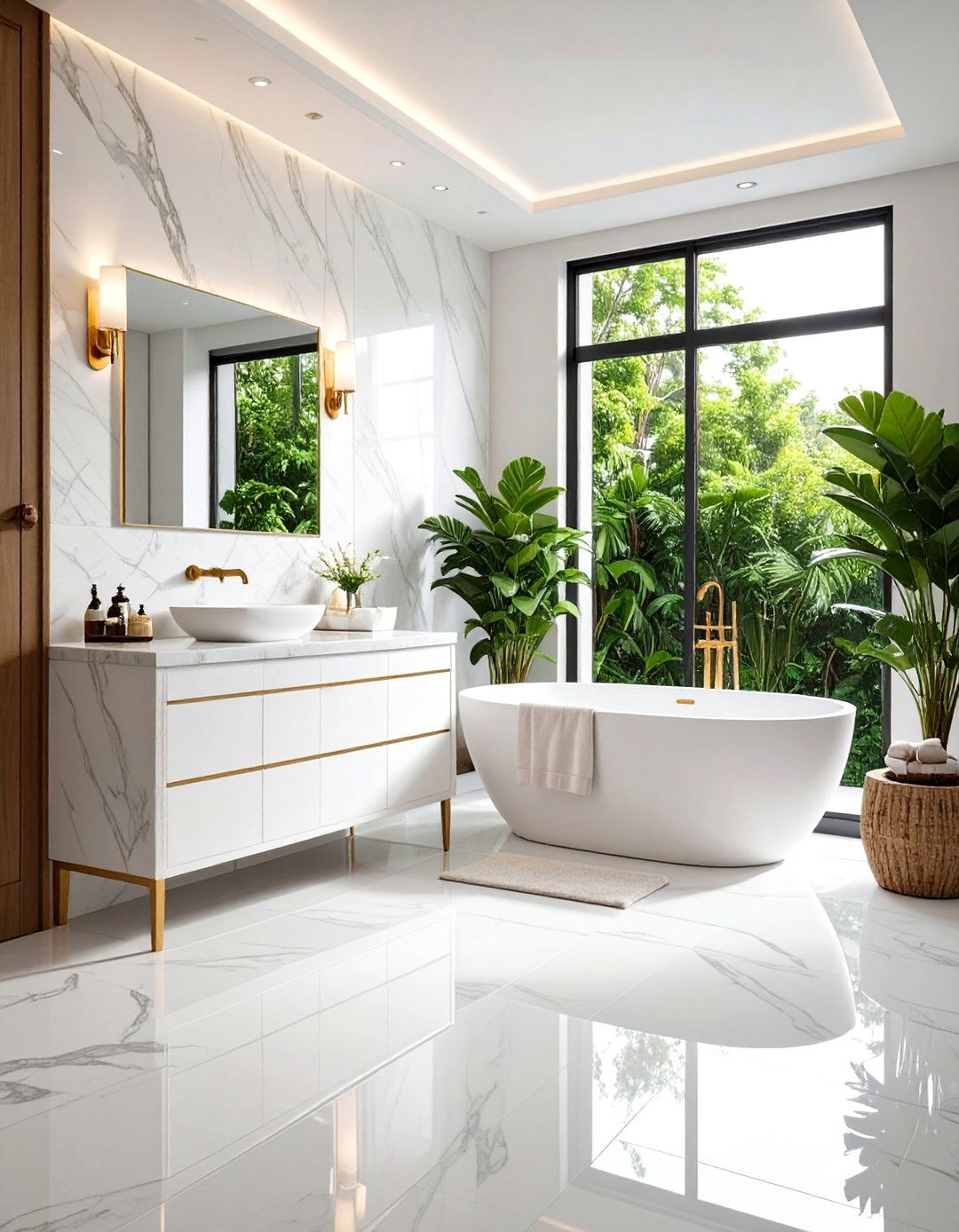
Add natural elegance with a stone or tile chair rail that introduces texture and luxury to your interior design. Marble, travertine, or ceramic chair rails work beautifully in bathrooms, kitchens, and formal dining areas where durability and sophistication are equally important. This chair rail material offers unique veining, colors, and patterns that complement both traditional and contemporary design schemes. Stone chair rails work particularly well when coordinating with natural stone countertops or tile installations. The material's inherent water resistance makes it ideal for high-moisture areas while providing easy maintenance. Consider honed finishes for subtle elegance or polished surfaces for dramatic impact that reflects light and enhances the room's brightness.
11. PVC and Composite Chair Rail
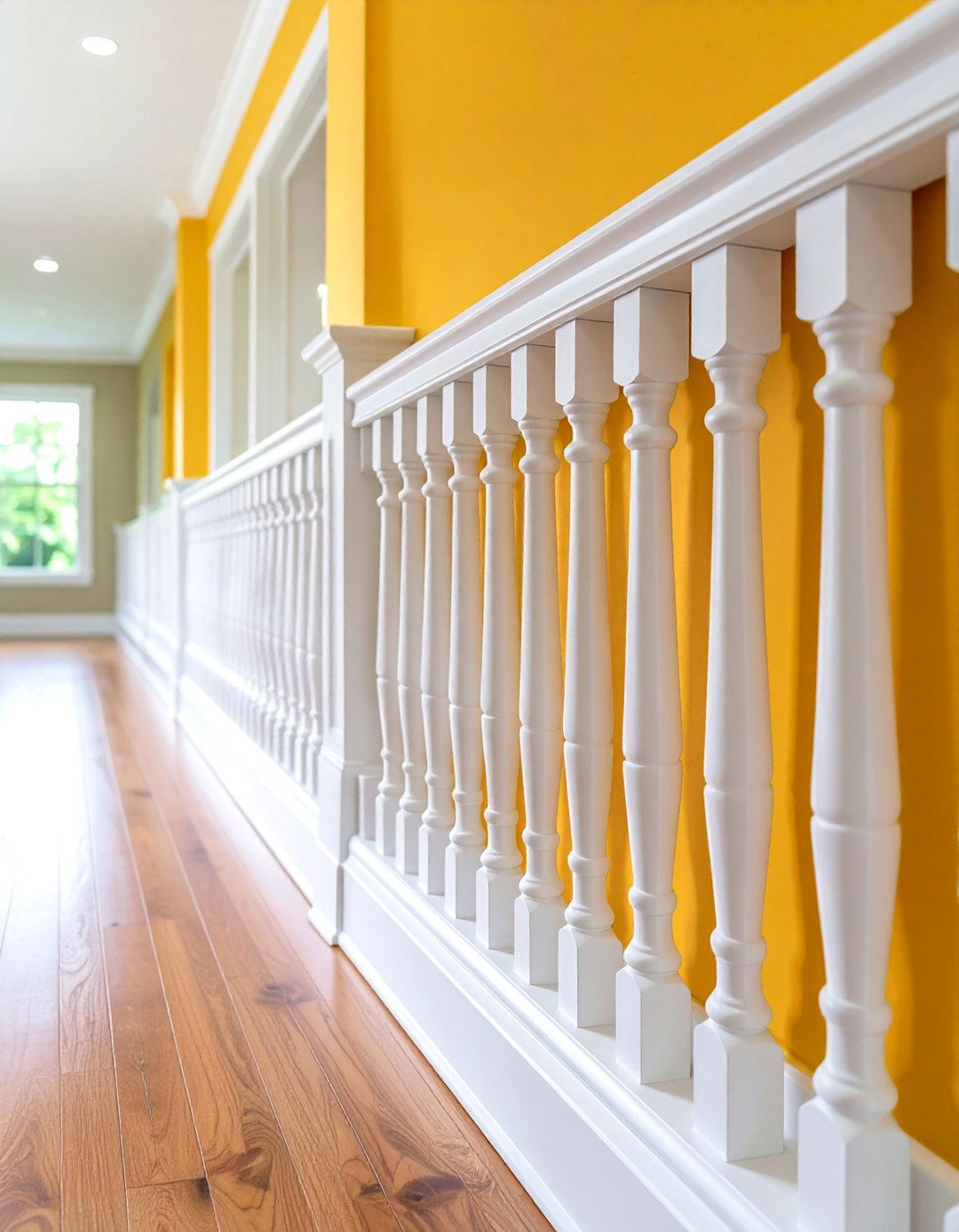
Achieve the look of traditional wood with modern PVC and composite chair rail materials that offer superior durability and easy maintenance. These synthetic materials resist moisture, insects, and warping while providing consistent quality and appearance. This chair rail option works exceptionally well in high-traffic areas, children's rooms, and homes with pets where durability is crucial. The smooth surface accepts paint beautifully and maintains its appearance over time without the maintenance requirements of natural wood. Installation is straightforward, and the lightweight material reduces installation time and costs. Choose from various profiles that mimic traditional wood moldings while providing modern performance benefits that make them ideal for busy households.
12. Reclaimed Wood Chair Rail
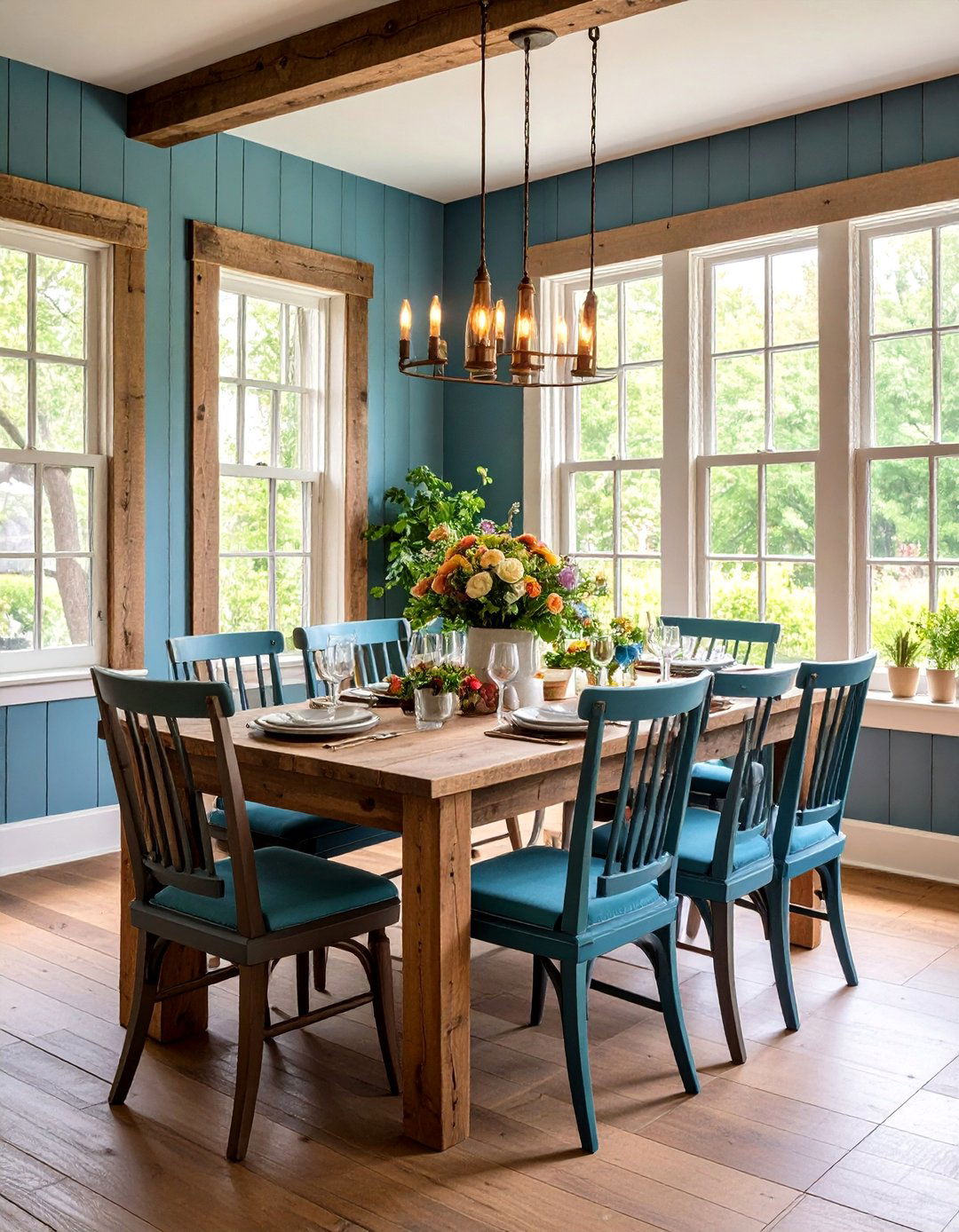
Create unique character with a reclaimed wood chair rail that brings history and sustainability to your interior design. Salvaged barn wood, old fence posts, or repurposed construction materials offer distinctive grain patterns, weathered textures, and natural patina that cannot be replicated with new materials. This chair rail style works beautifully in rustic, farmhouse, and eclectic interiors where authentic character is valued. Each piece tells a story through its unique markings, nail holes, and weathered surfaces. The varied widths and imperfect edges add charm while creating conversation-worthy focal points. Consider clear protective finishes that preserve the wood's natural character while providing necessary protection against wear and moisture.
13. Chair Rail with Crown Molding Integration
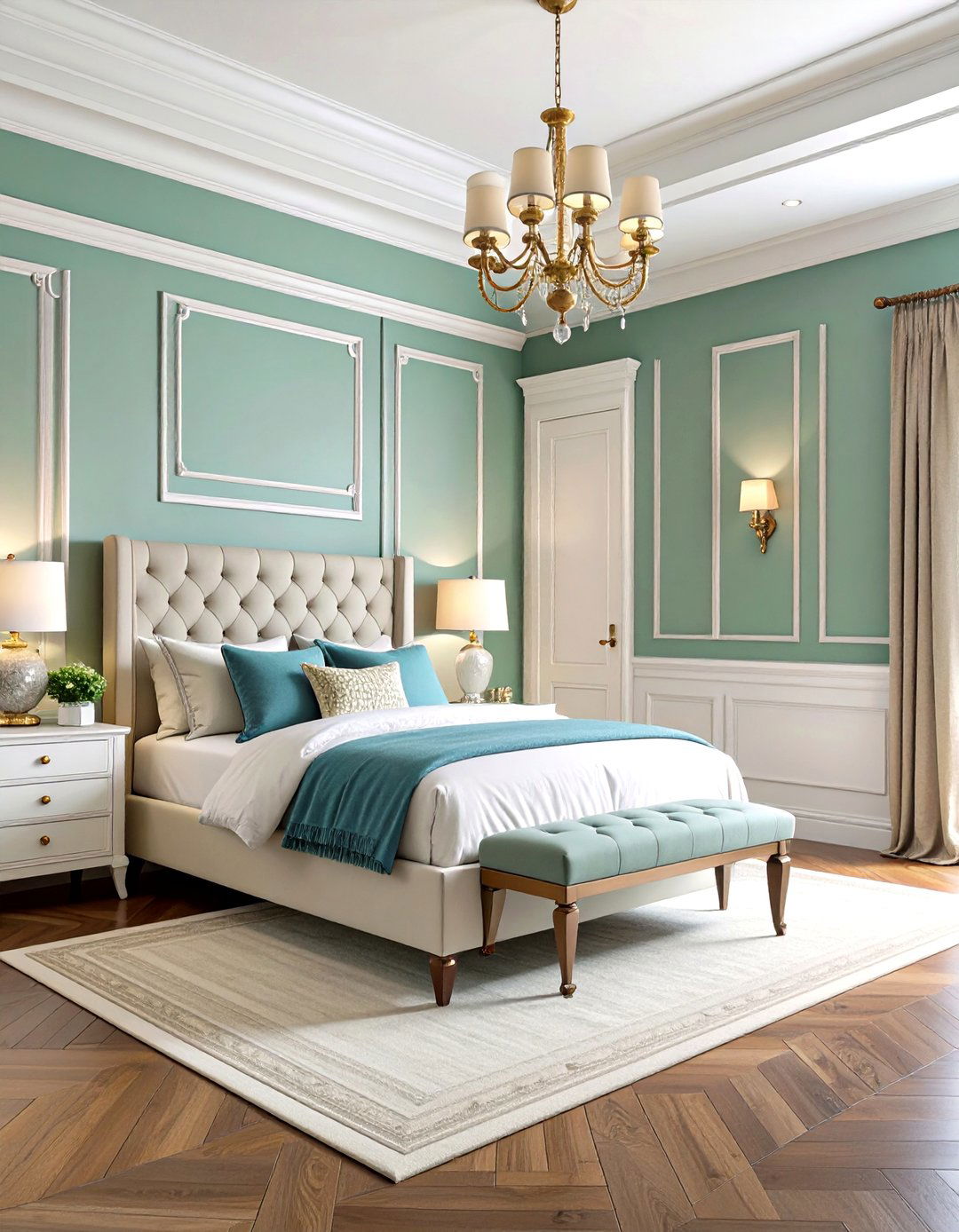
Create cohesive architectural detail by integrating your chair rail design with crown molding for a unified, sophisticated appearance. This approach involves selecting molding profiles that complement each other while maintaining consistent proportions throughout the room. The chair rail and crown molding should share similar design elements, whether traditional ogee curves or contemporary flat profiles. This coordinated approach works particularly well in formal dining rooms, living rooms, and master bedrooms where architectural continuity enhances the overall design. Paint both elements in matching colors to create seamless integration, or use subtle contrast to define each element while maintaining harmony. Professional design consultation ensures proper proportions and visual balance throughout the space.
14. Monochromatic Chair Rail Design
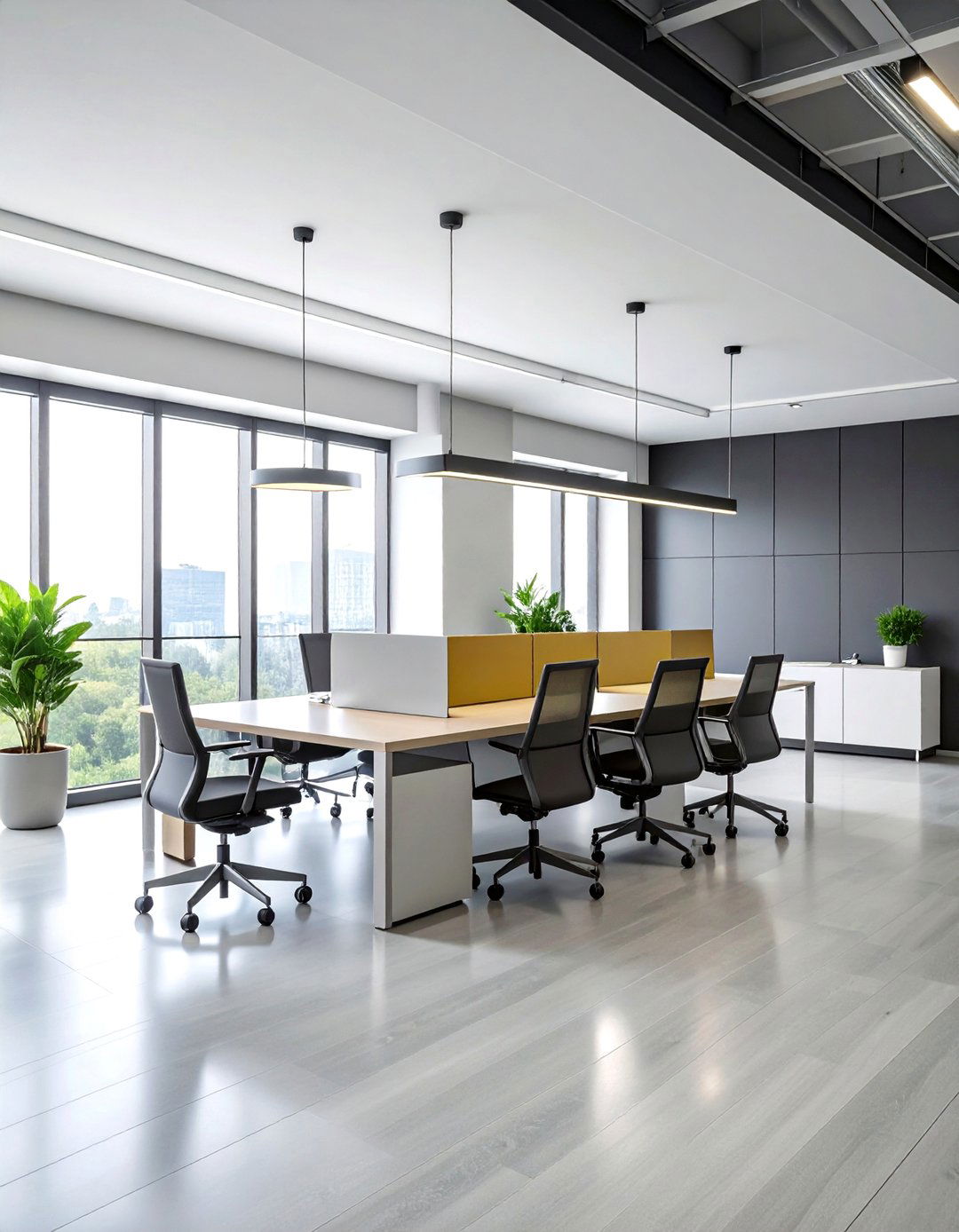
Achieve contemporary sophistication with a monochromatic chair rail design that uses varying shades of the same color family throughout the installation. This subtle approach creates depth and interest without dramatic contrast, making it perfect for modern and minimalist interiors. The chair rail, upper walls, and lower treatment all work within the same color palette while using different tones or finishes to define boundaries. Gray-on-gray combinations offer timeless elegance, while white-on-white creates serene, spa-like atmospheres. This design strategy works exceptionally well in bedrooms, offices, and living areas where calm, cohesive environments are desired. The subtle variation provides visual interest without overwhelming small spaces or competing with furnishings.
15. Chair Rail with Wallpaper Below
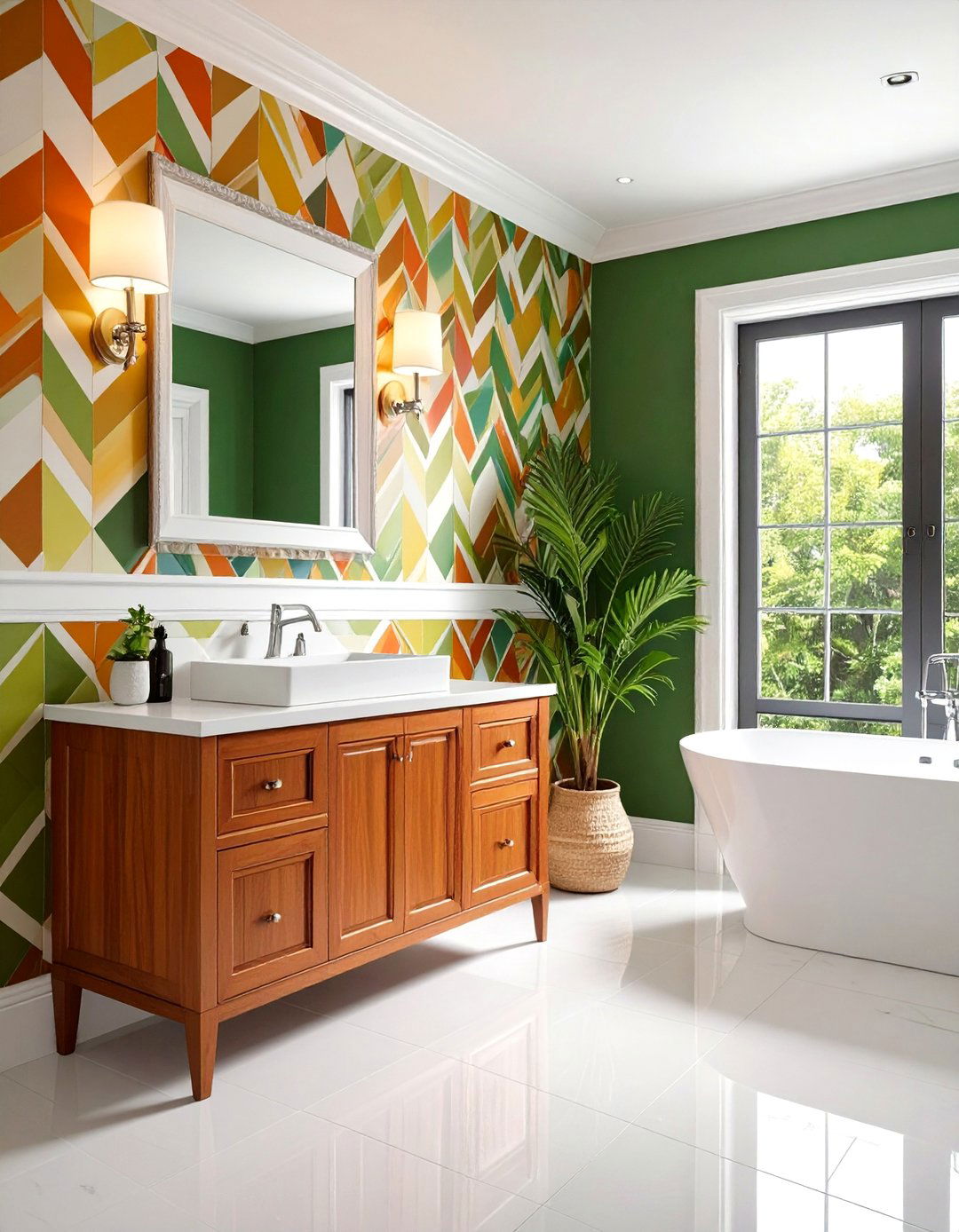
Add pattern and personality with a chair rail design that incorporates wallpaper below the molding for dramatic visual impact. This approach allows you to use bold patterns, textures, or colors below the chair rail while maintaining neutral tones above. Grasscloth wallpaper creates sophisticated texture, while geometric patterns add contemporary flair. The chair rail provides a natural stopping point that prevents patterns from overwhelming the space. This design works beautifully in powder rooms, dining areas, and accent walls where you want to make a statement. Choose wallpapers that complement your overall color scheme while the chair rail creates clean definition between the patterned lower section and solid upper walls.
16. Higher Placement Chair Rail for Drama
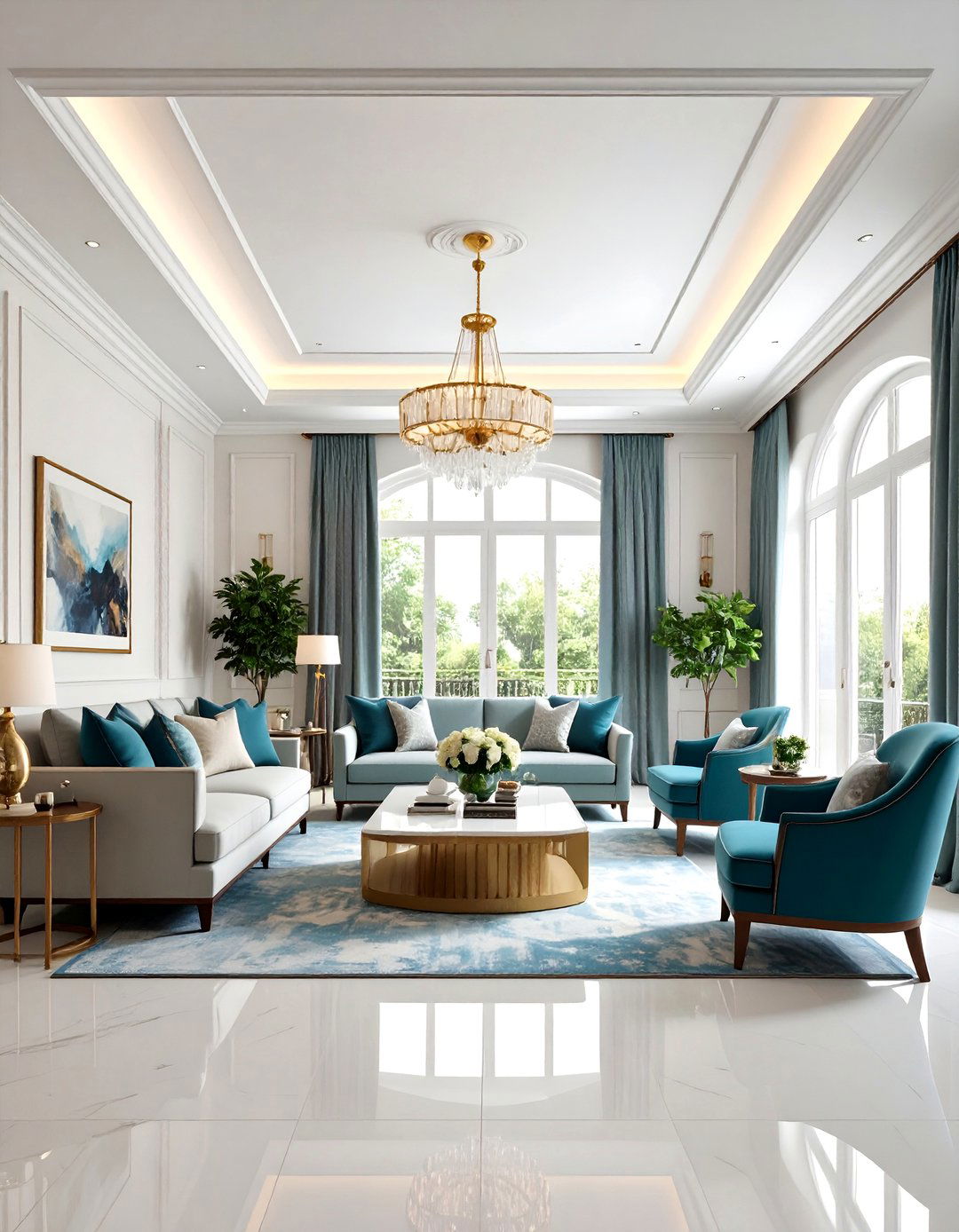
Break traditional rules with a higher placement chair rail that creates dramatic proportions and emphasizes ceiling height. Installing the chair rail at 45-48 inches instead of the standard 32 inches creates striking visual impact while making standard 8-foot ceilings appear taller. This chair rail placement works particularly well in rooms with tall furniture, large artwork, or architectural features that benefit from elevated horizontal lines. The higher placement allows for larger wall sections below, perfect for substantial wainscoting or bold paint colors. Consider this approach in dining rooms with tall hutches, living rooms with substantial furniture, or bedrooms where you want to create a sense of grandeur and spaciousness.
17. Chair Rail on Columns and Architectural Features

Extend chair rail molding beyond walls to include columns, half-walls, and other architectural features for comprehensive design continuity. This approach creates seamless flow throughout open floor plans while maintaining consistent horizontal lines that unify different areas. The chair rail wraps around columns, continues across openings, and adapts to various architectural elements within the space. This design strategy works particularly well in great rooms, open kitchens, and homes with multiple levels where visual continuity enhances the overall design. Careful planning ensures proper proportions and smooth transitions between different surfaces while maintaining the molding's structural integrity and visual appeal throughout the connected spaces.
18. Flat Panel Contemporary Chair Rail
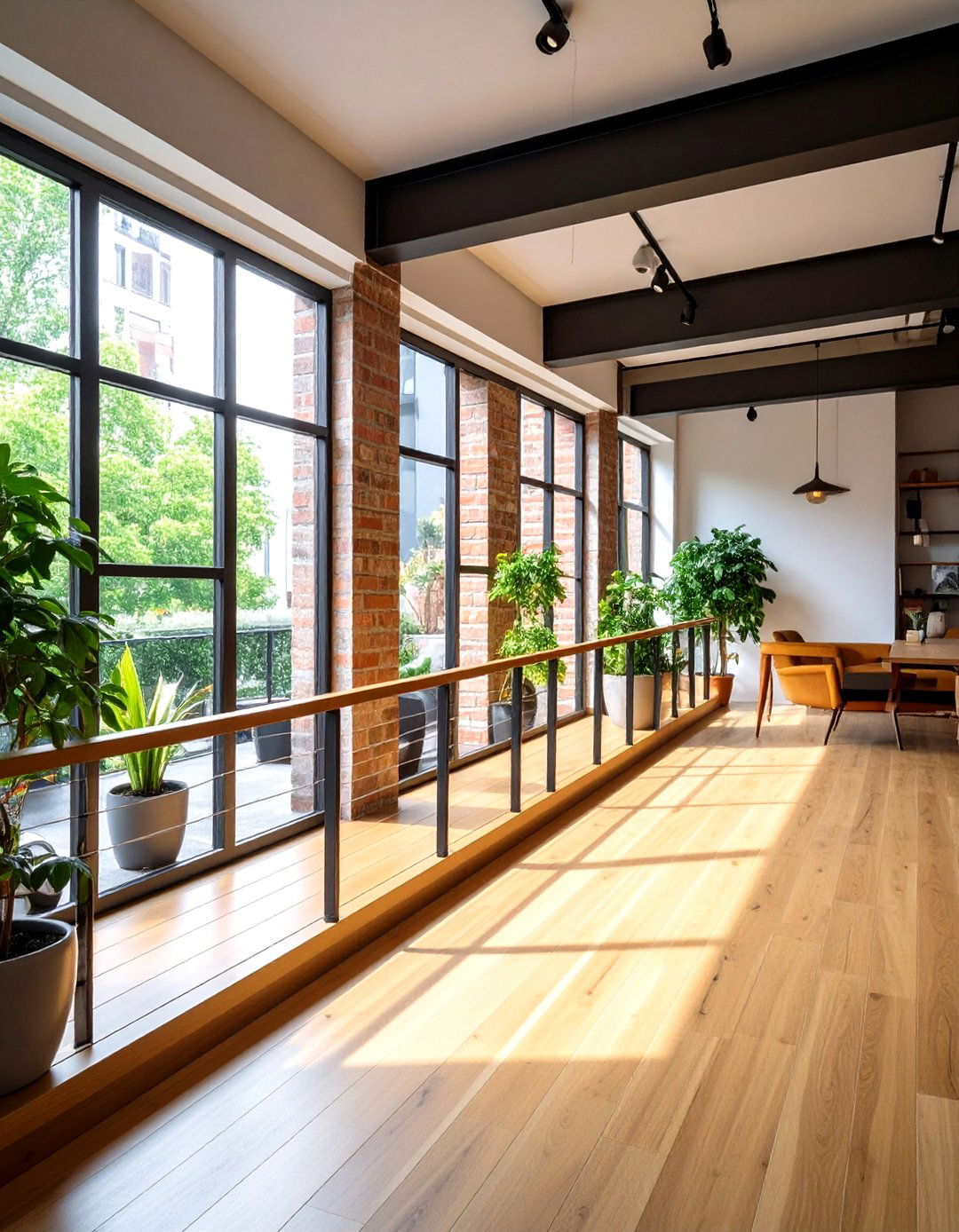
Embrace minimalist aesthetics with a flat panel contemporary chair rail that provides clean lines without ornate detailing. This streamlined approach features smooth, unembellished molding profiles that complement modern and transitional interiors. The chair rail creates subtle definition without competing with contemporary furnishings or artwork. This style works exceptionally well in urban lofts, modern homes, and spaces where simplicity is valued over ornate decoration. The flat profile accepts paint beautifully while maintaining crisp edges and clean geometry. Consider wider moldings for greater impact or multiple thin strips for subtle layering effects. The understated elegance allows other design elements to take center stage while providing necessary architectural definition.
19. Built-up Molding Chair Rail
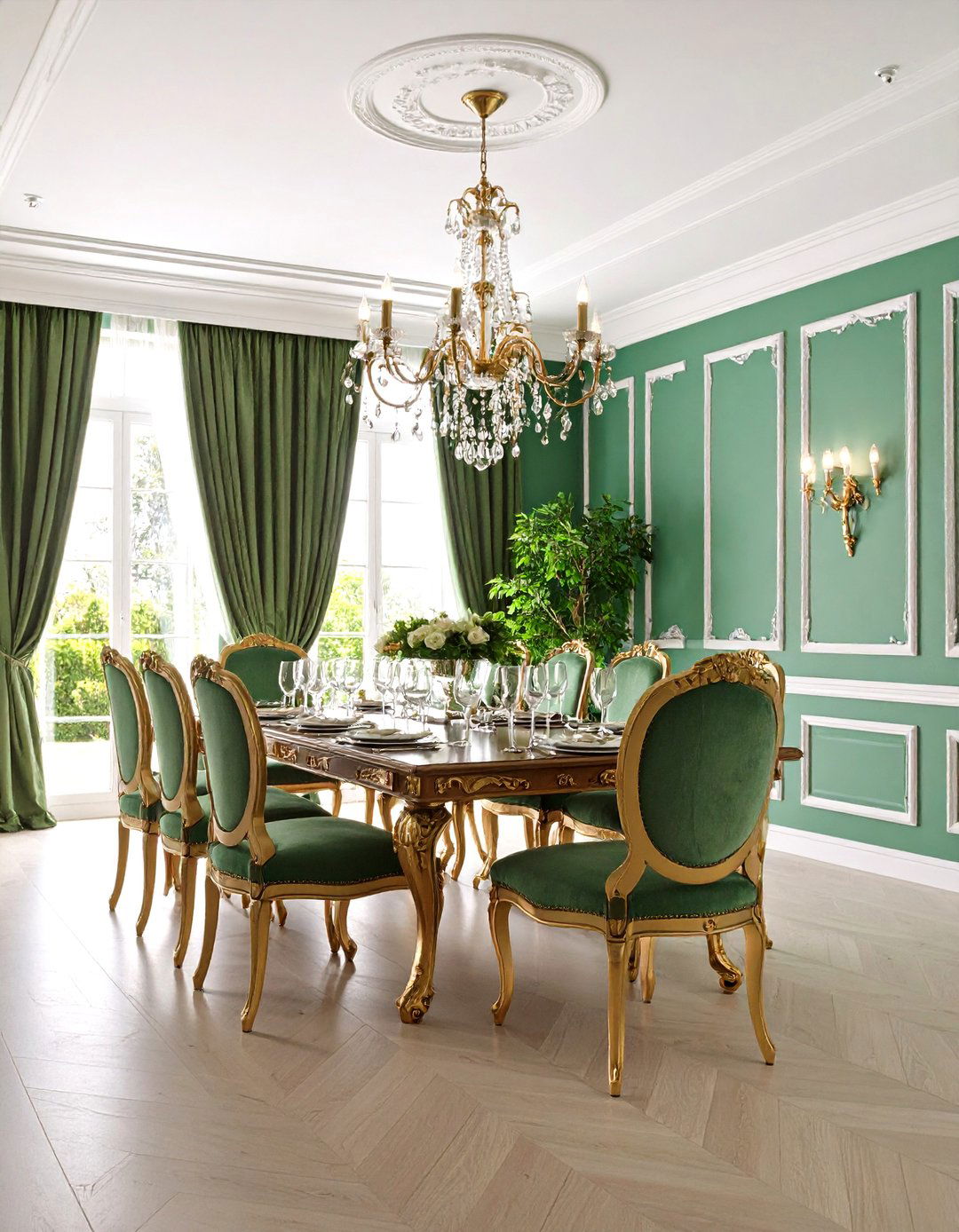
Create custom architectural detail with a built-up molding chair rail that combines multiple molding profiles for unique, layered effects. This approach involves stacking different moldings to create complex profiles that appear custom-designed for your space. Combine base cap molding with chair rail profiles, or layer multiple thin strips for sophisticated dimensionality. This chair rail technique works beautifully in traditional homes where elaborate architectural detail is desired. The layered approach allows for creative customization while using readily available materials. Professional installation ensures proper alignment and seamless joints between different molding elements. Paint the entire assembly in unified colors to emphasize the profile's complexity while maintaining cohesive appearance throughout the installation.
20. Chair Rail with Contrasting Material Combinations
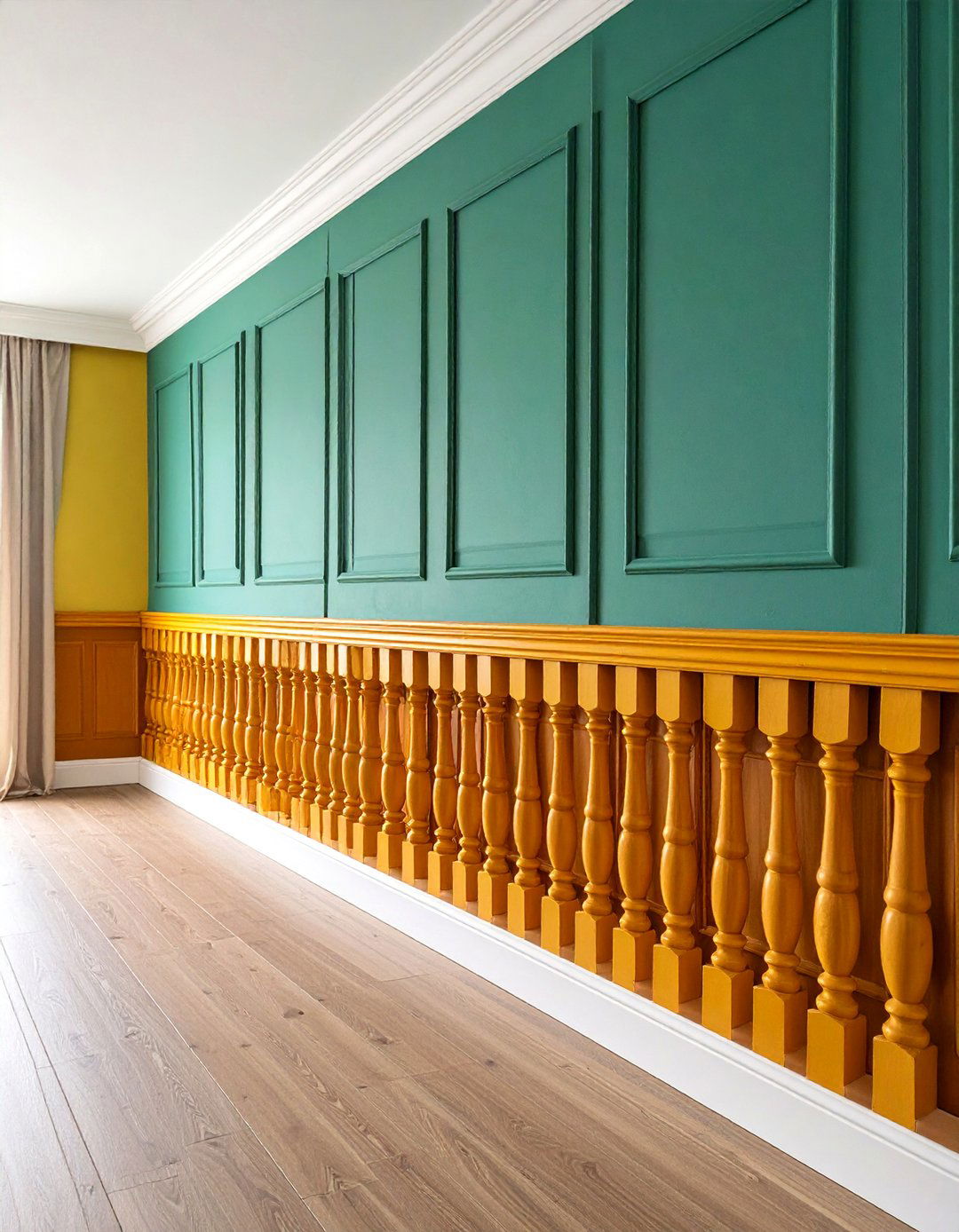
Create visual interest by combining different materials above and below your chair rail for striking contrast and texture variation. This innovative approach might feature wood wainscoting below with painted drywall above, or stone panels beneath the chair rail with textured plaster above. The chair rail serves as the transition element that unifies disparate materials while creating clear definition between treatments. This design strategy works particularly well in eclectic interiors where mixing materials creates dynamic, personalized environments. Consider maintenance requirements when selecting material combinations, ensuring compatibility and longevity. The contrasting approach allows for creative expression while the chair rail provides necessary visual structure and architectural coherence throughout the design.
Conclusion:
Chair rails offer endless possibilities for enhancing your home's architectural character while reflecting personal style preferences. From traditional wooden installations to contemporary metal designs, these versatile elements provide both practical protection and sophisticated visual appeal. Whether you choose classic wainscoting combinations, modern minimalist profiles, or creative material mixing, the right chair rail design can transform ordinary walls into stunning focal points. Consider your room's proportions, existing architectural features, and overall design goals when selecting the perfect chair rail solution for your space.


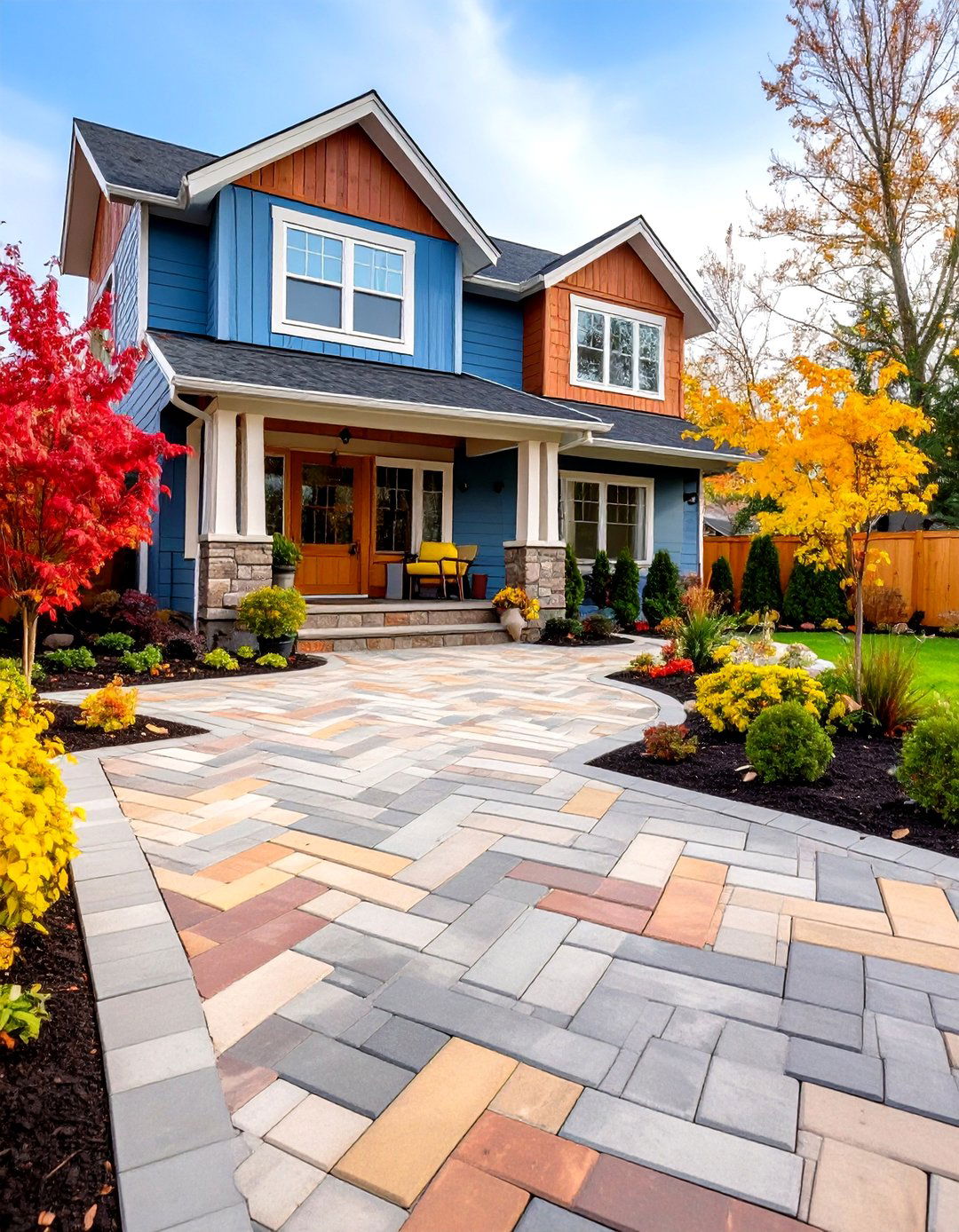

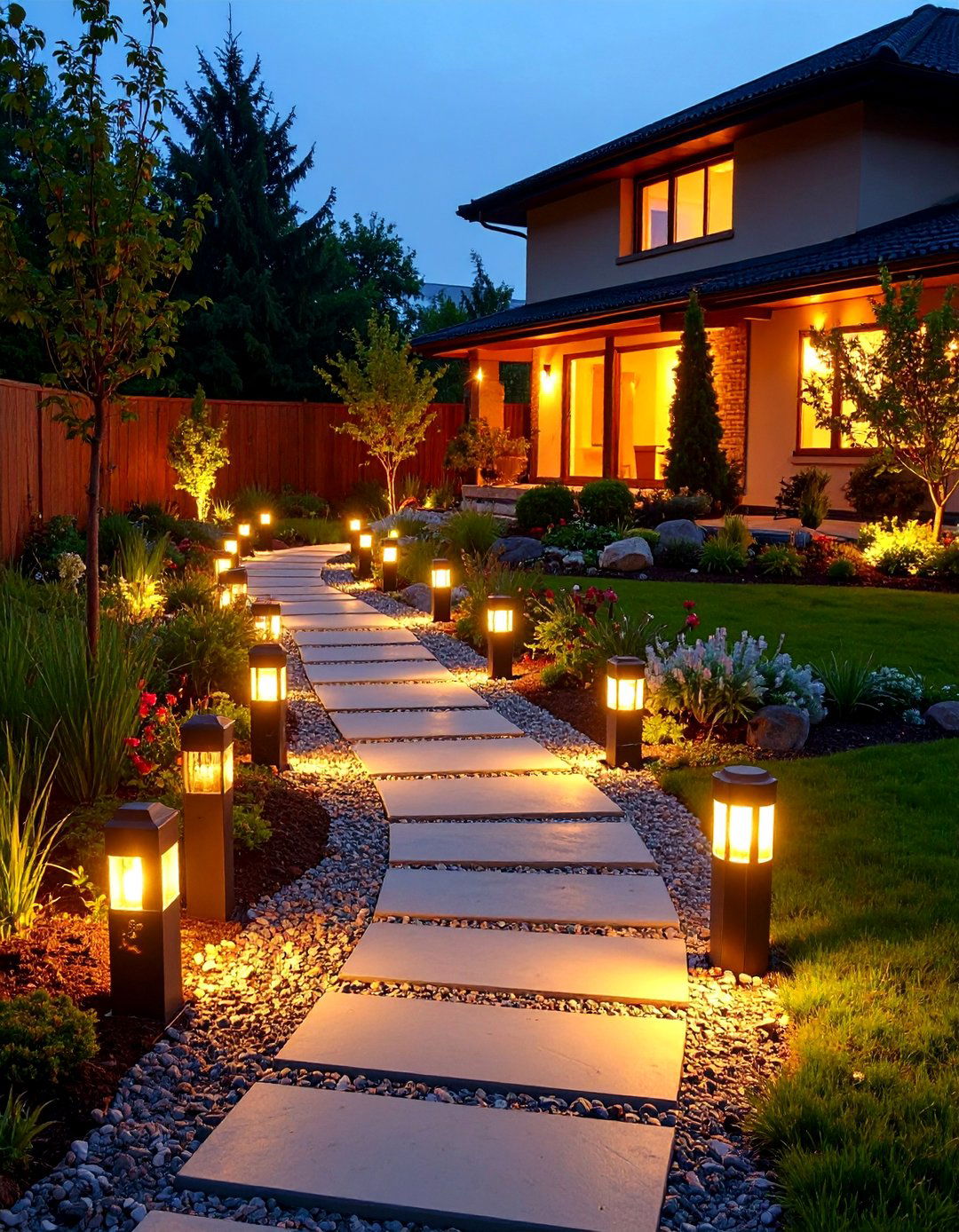
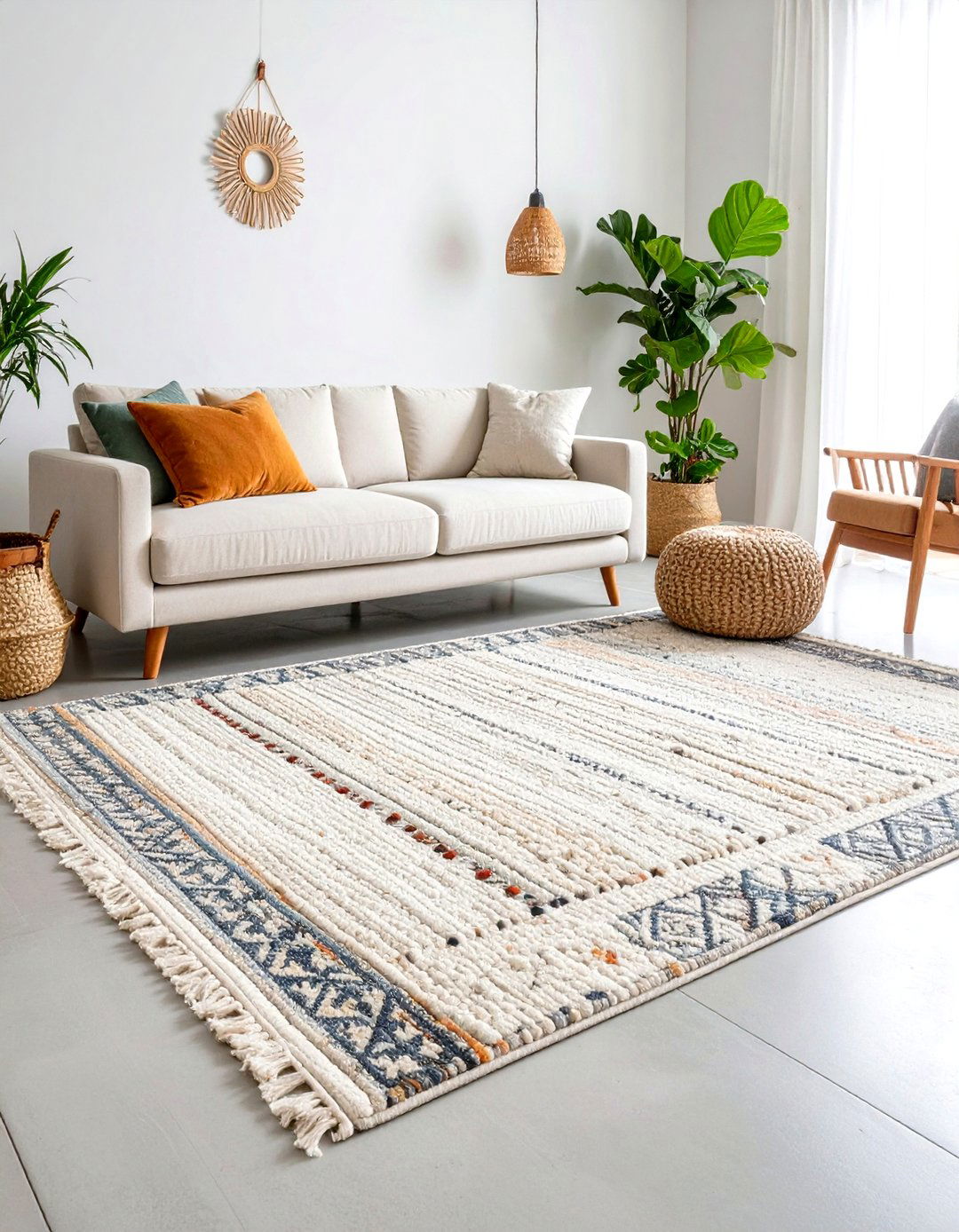
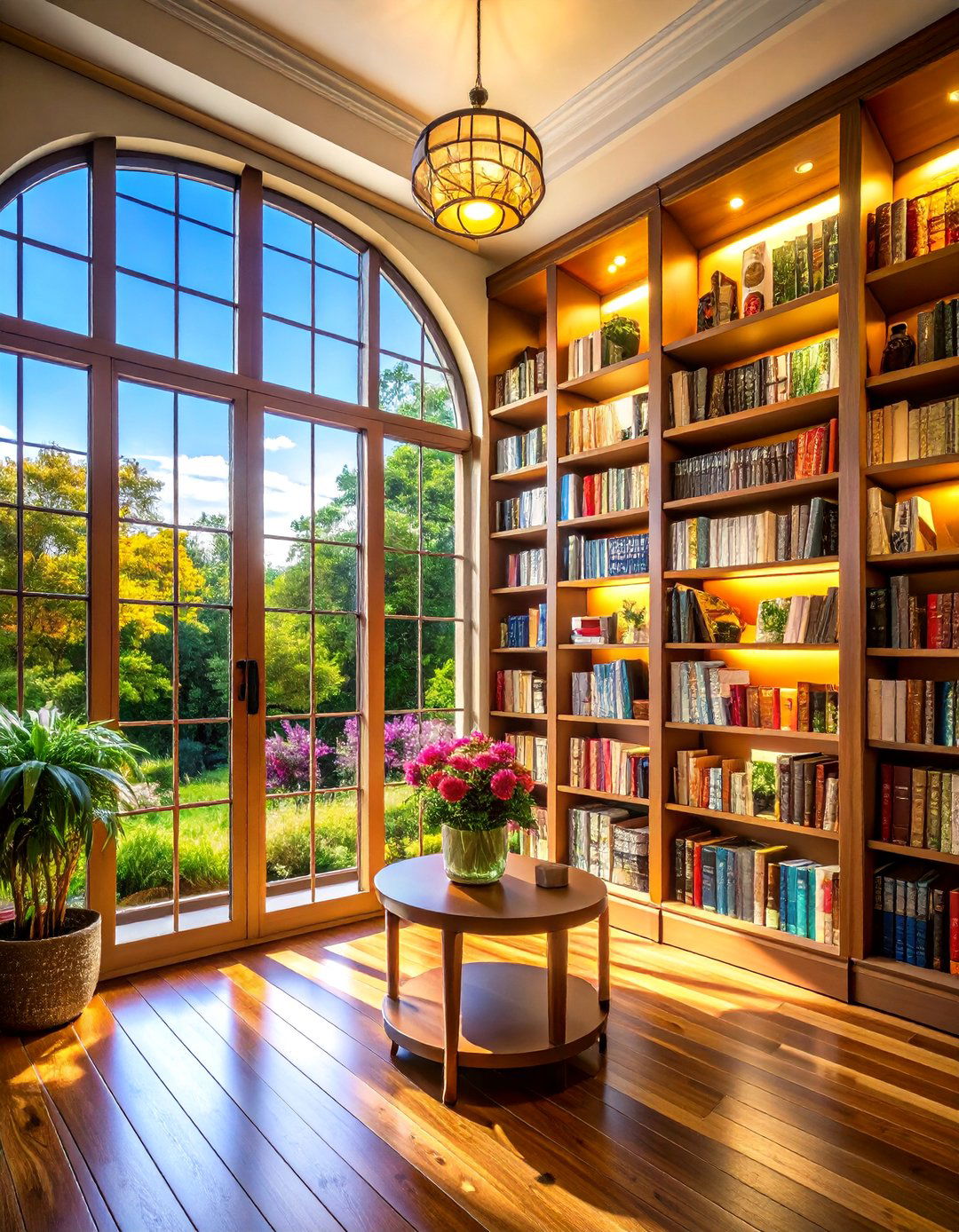
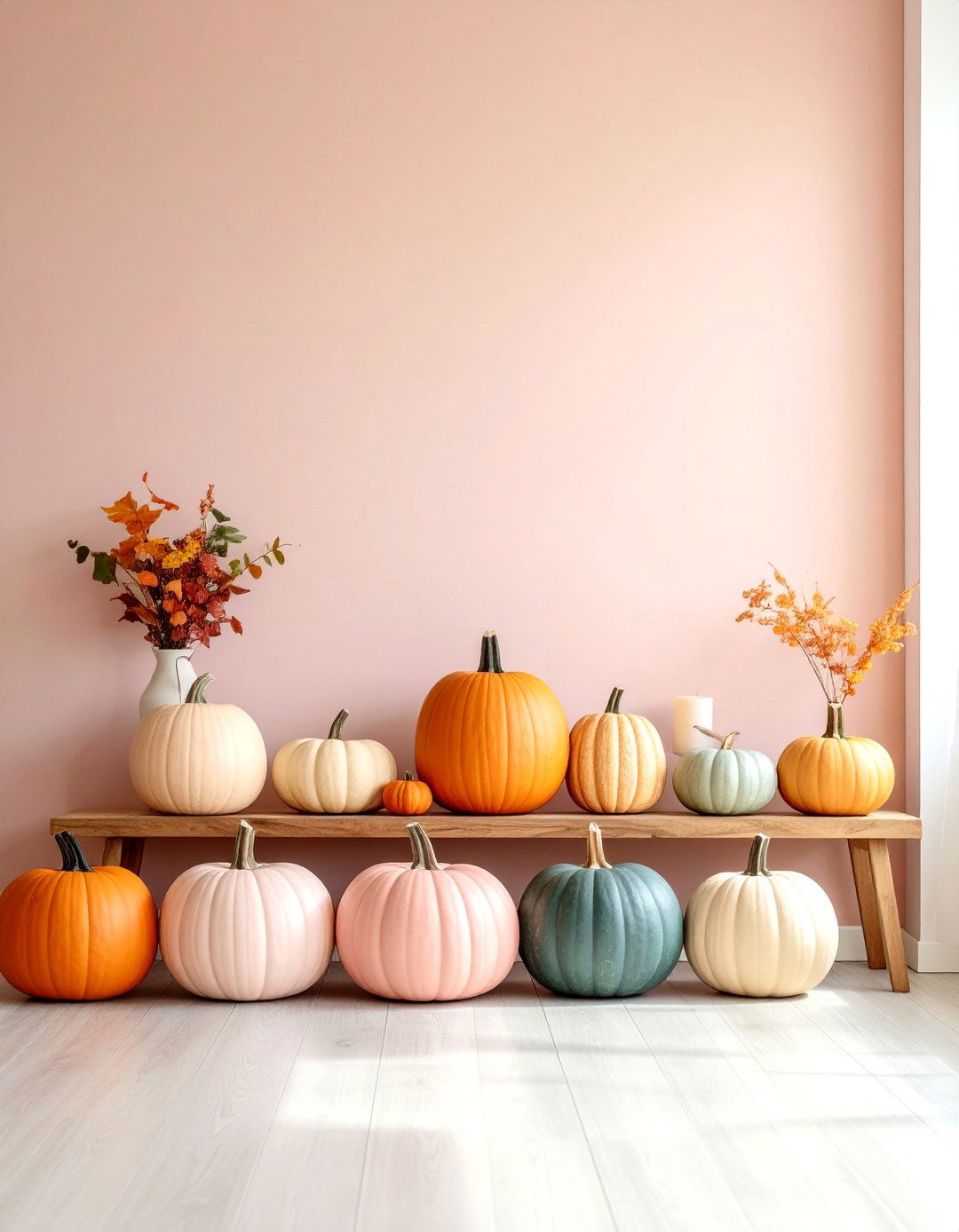
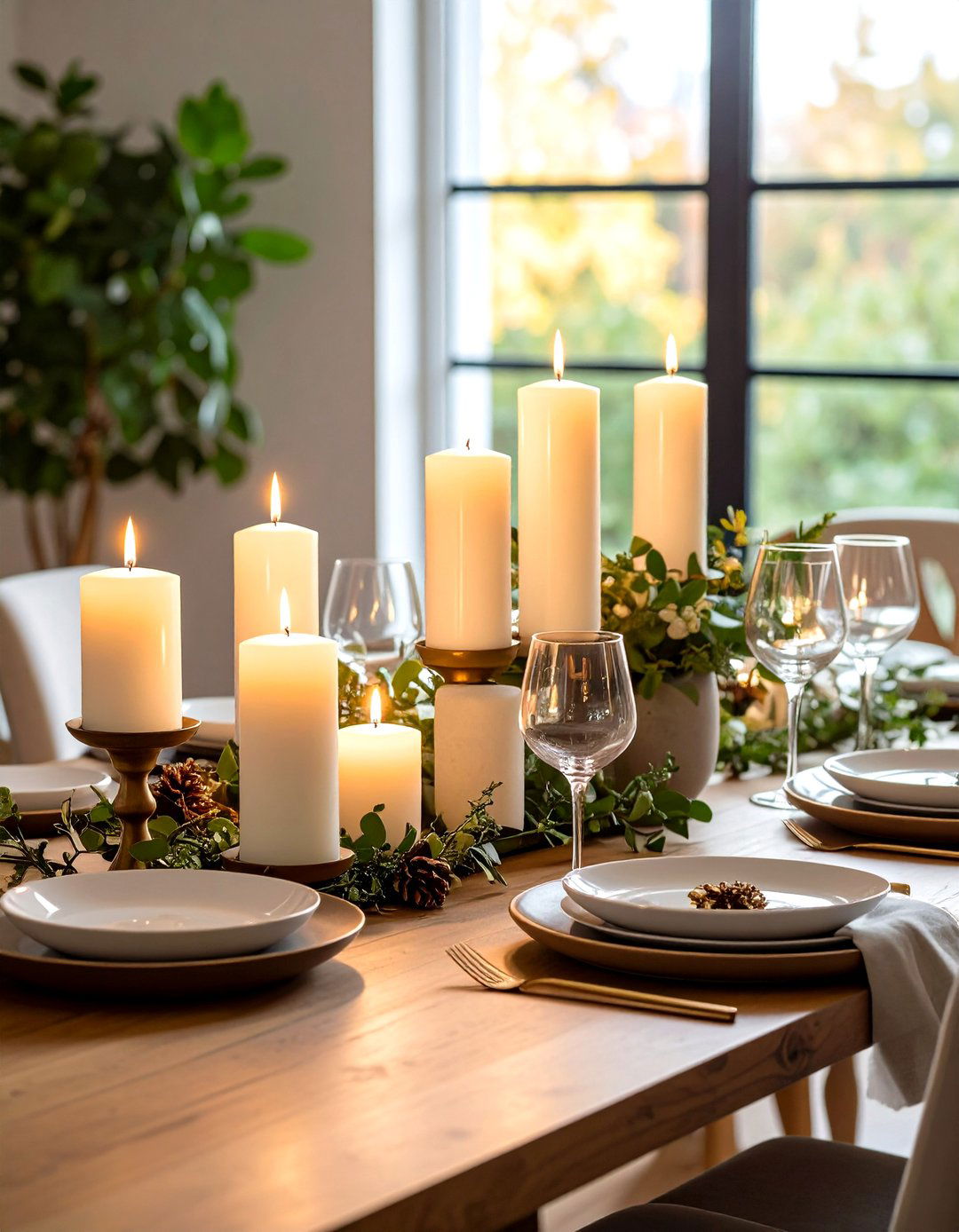
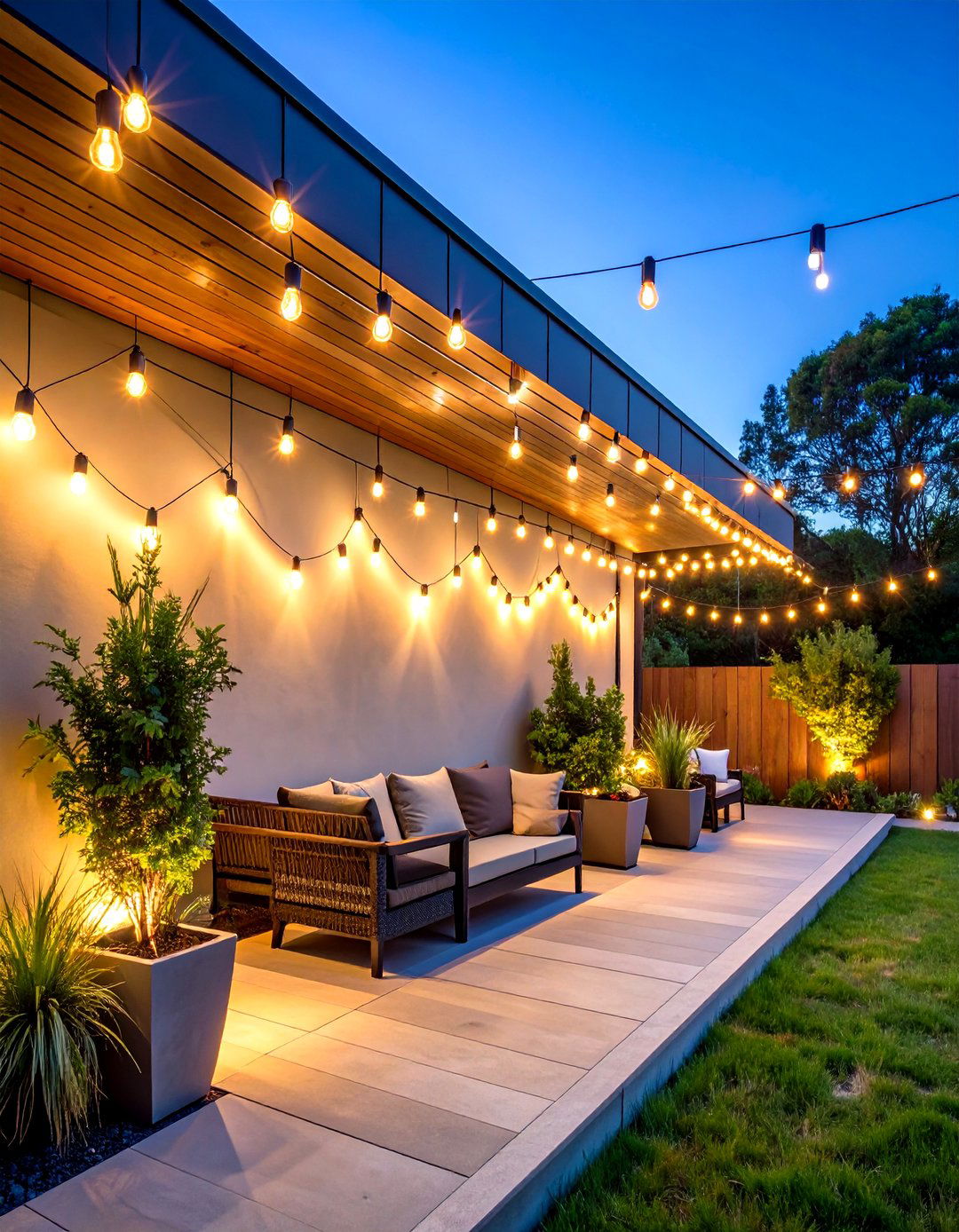
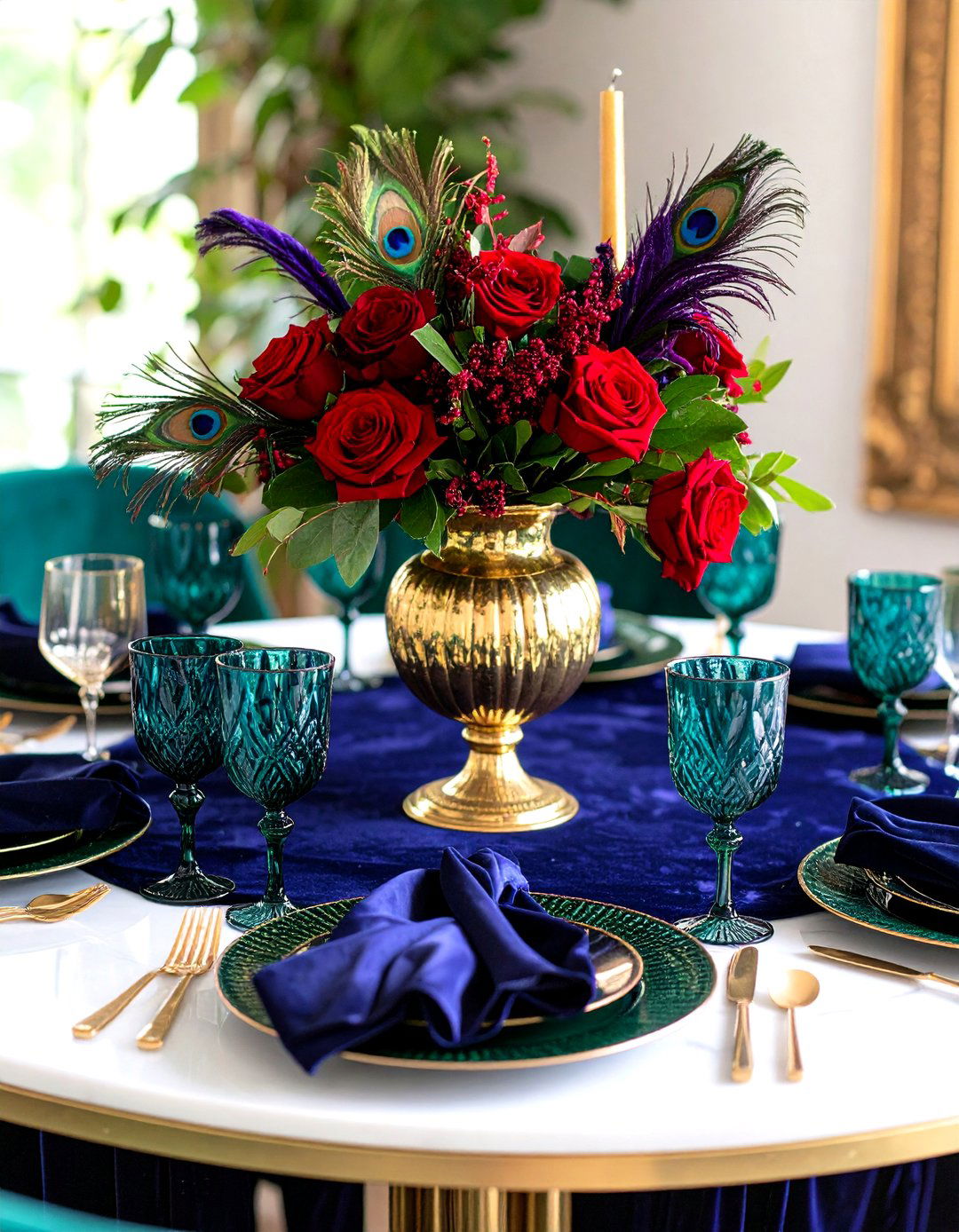
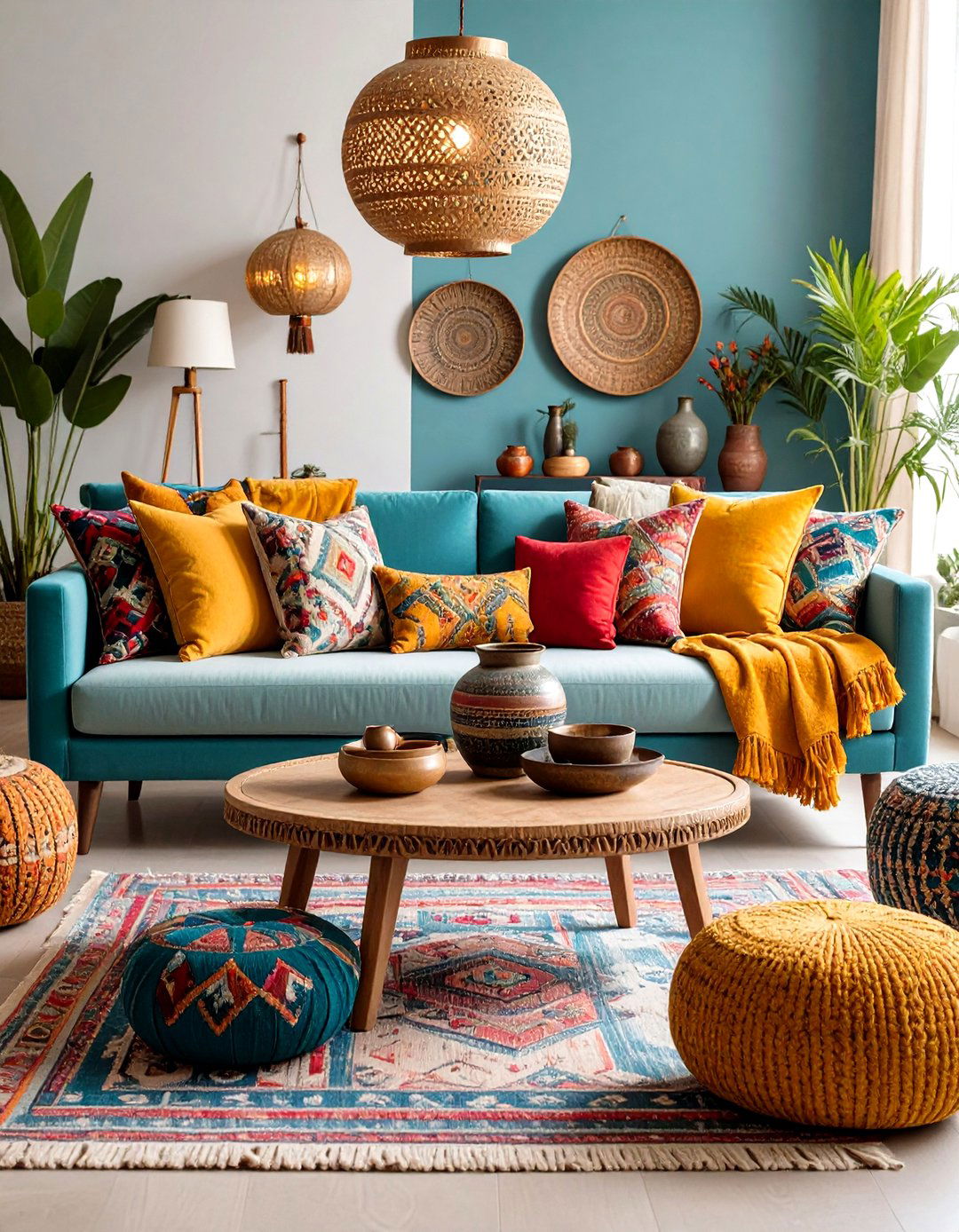
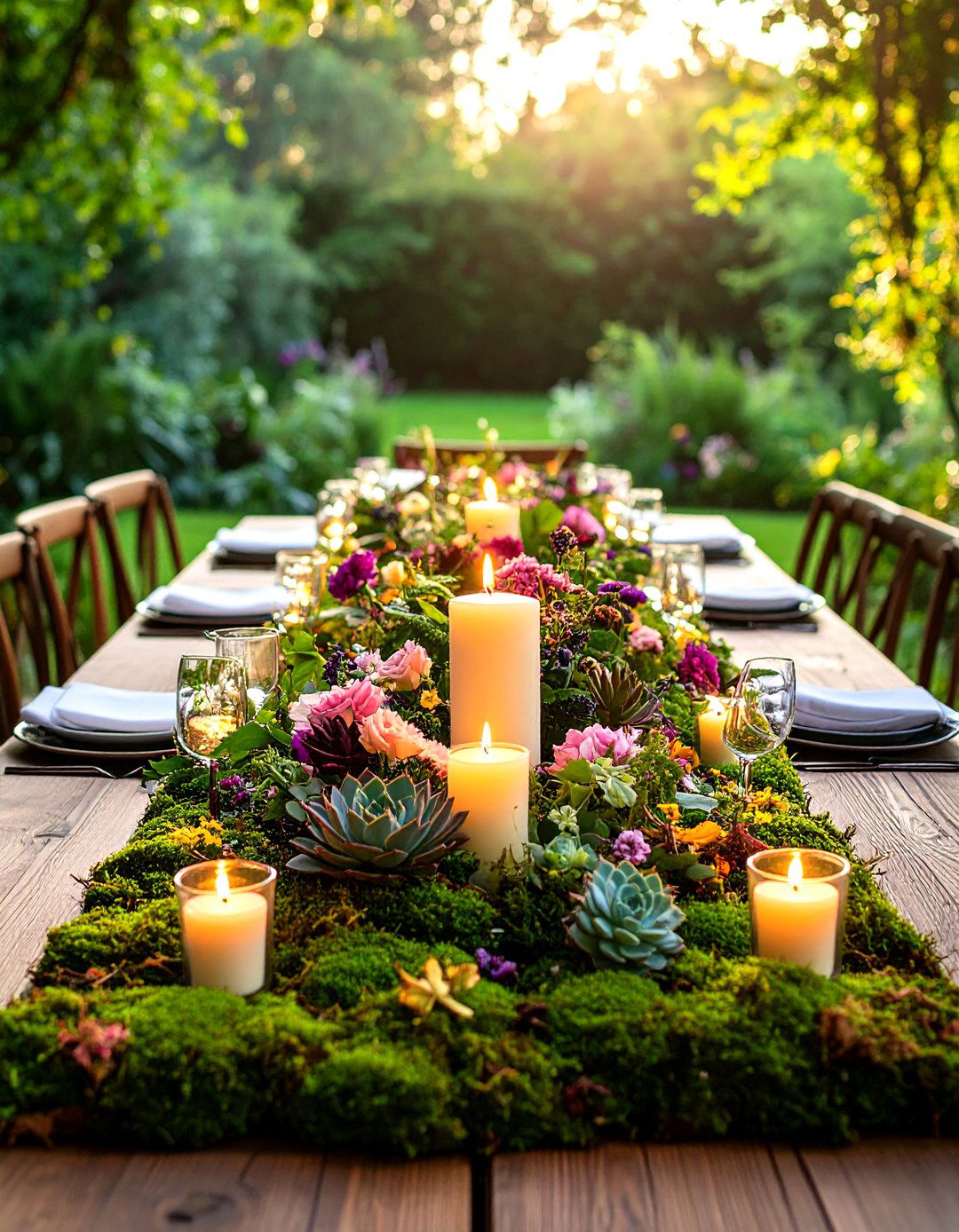
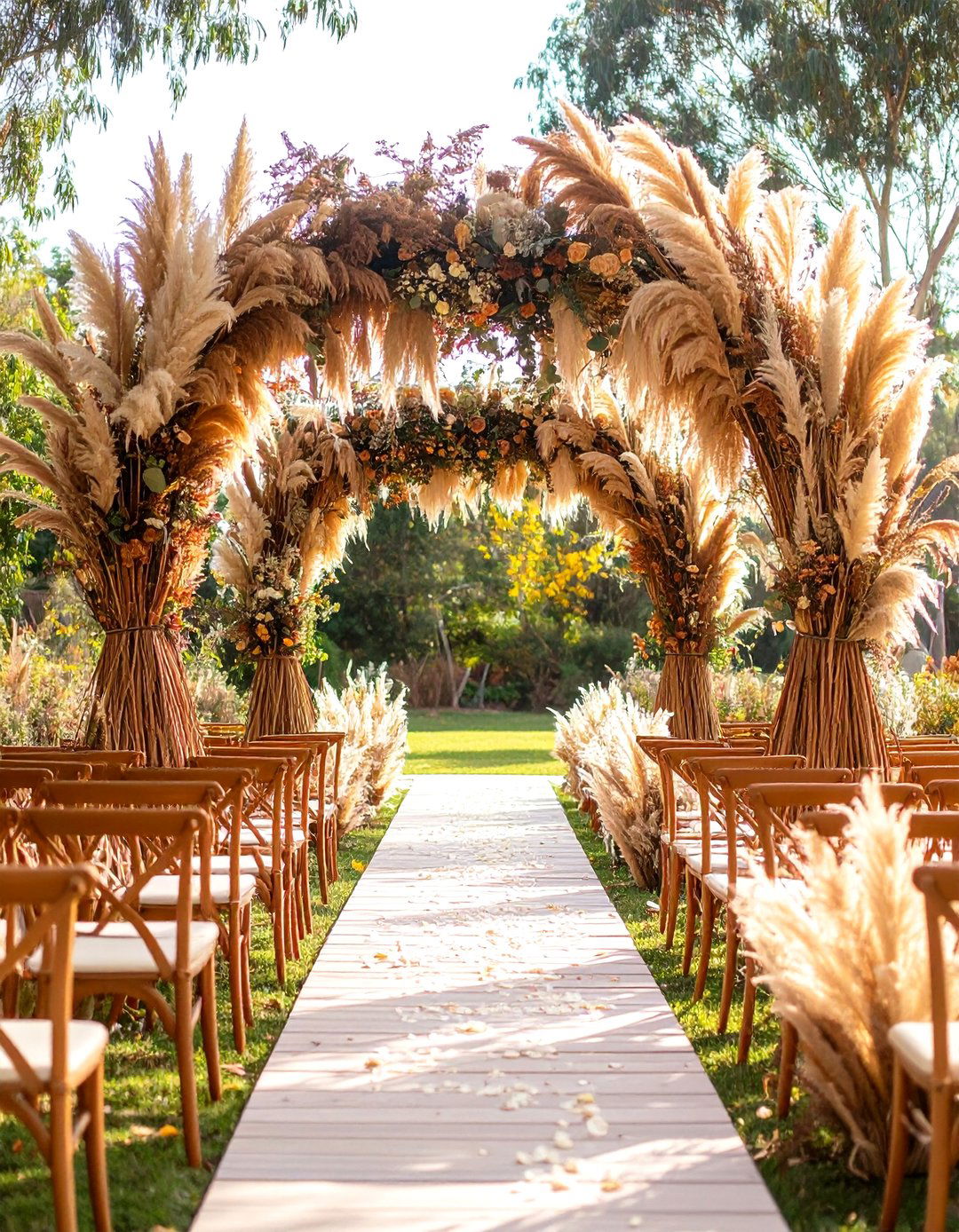
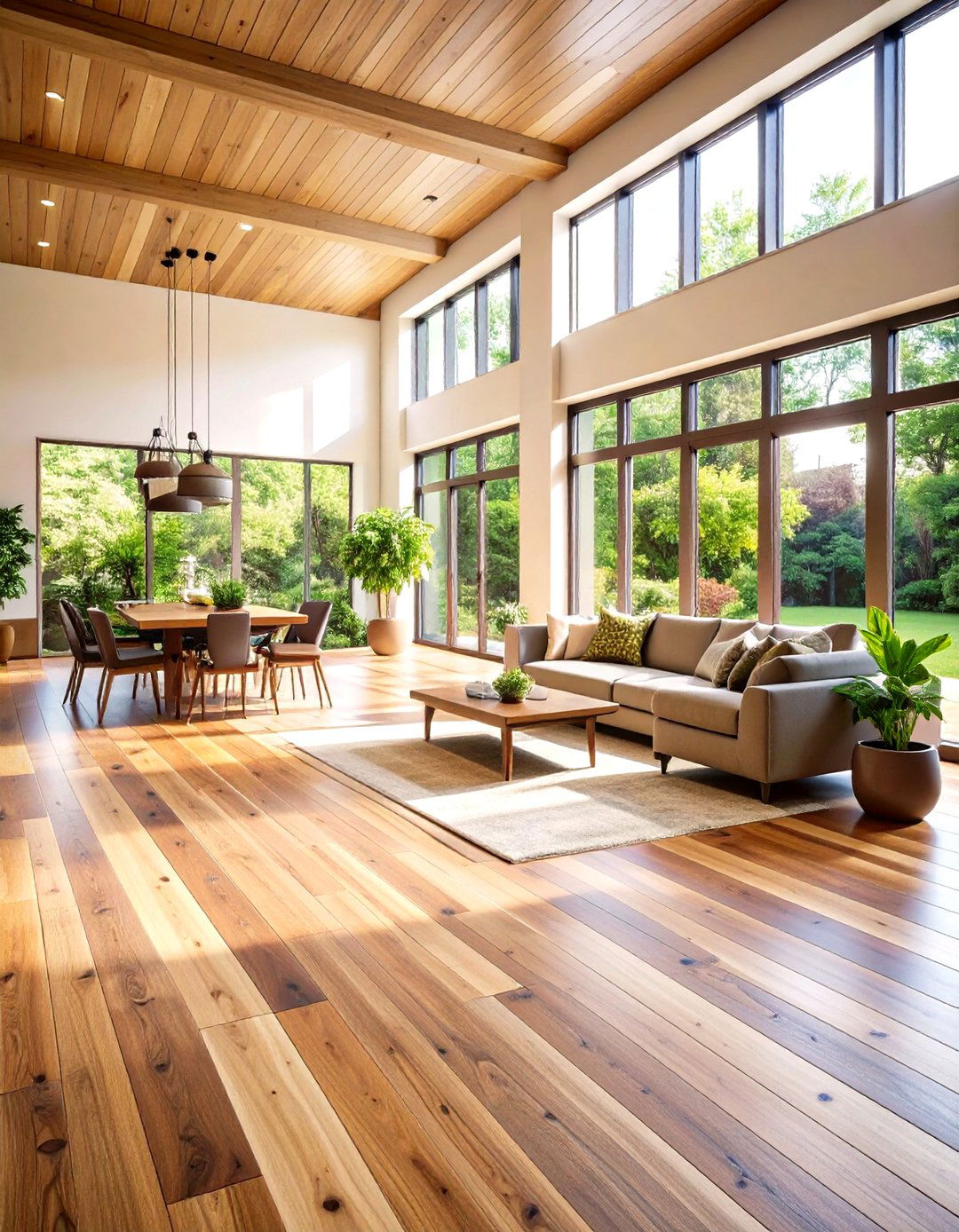
Leave a Reply